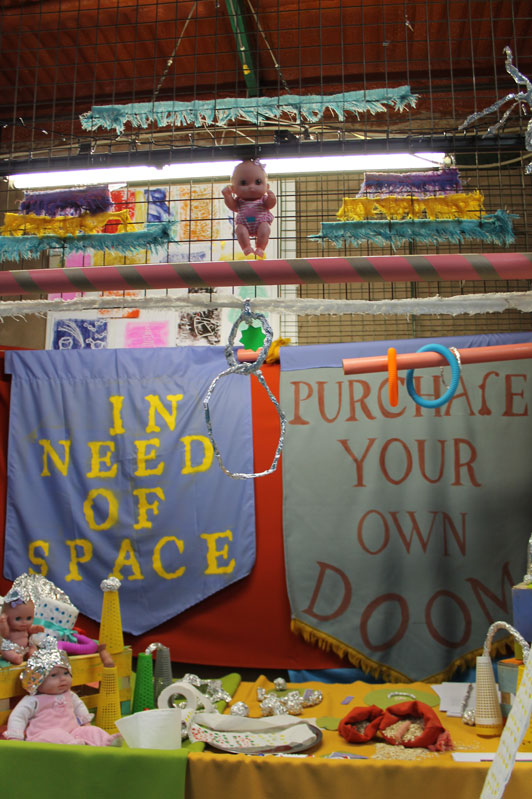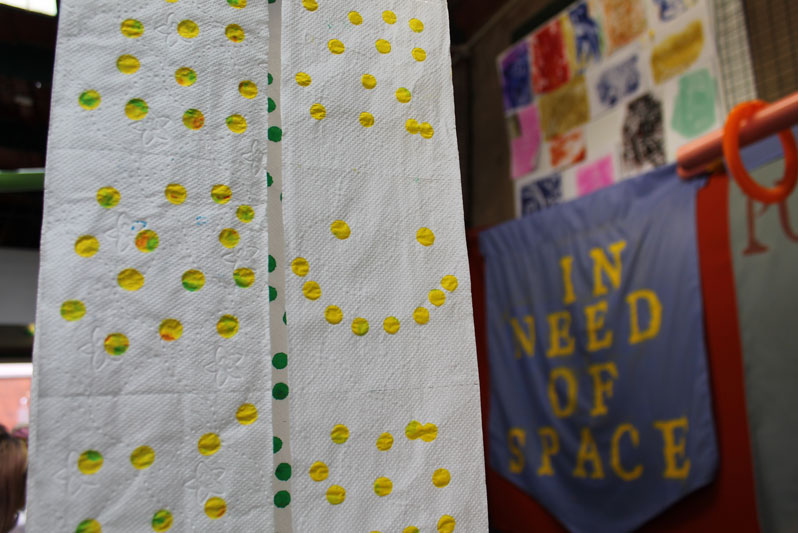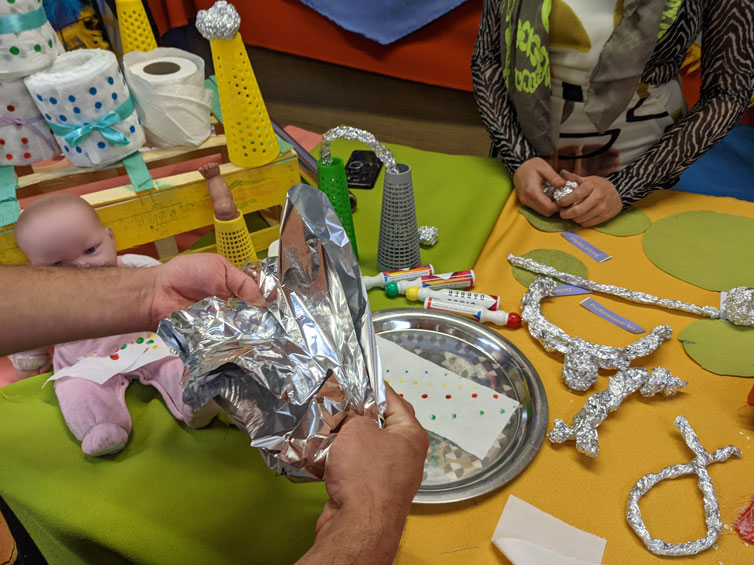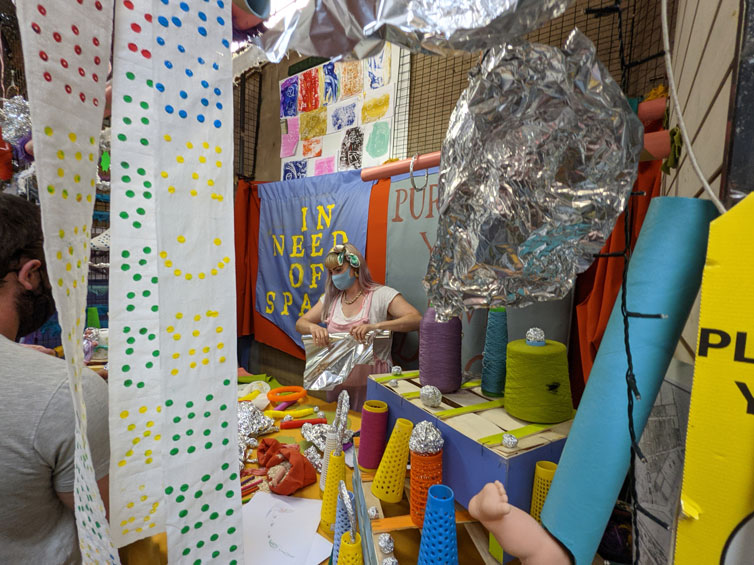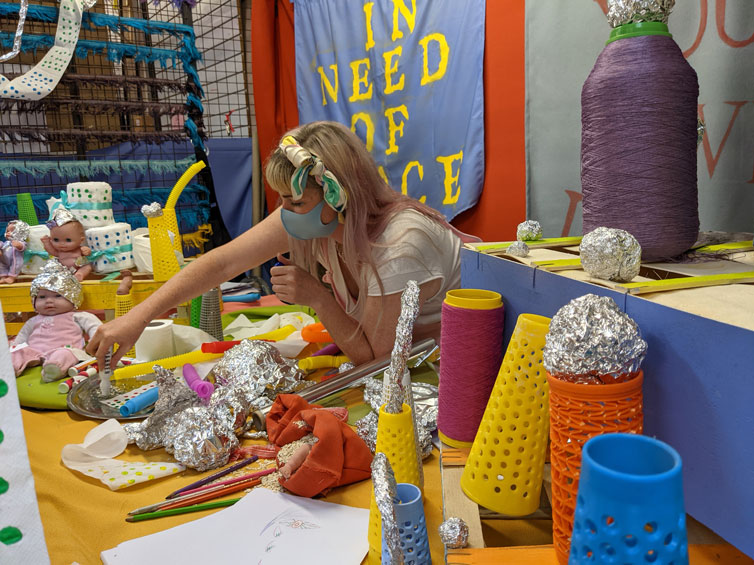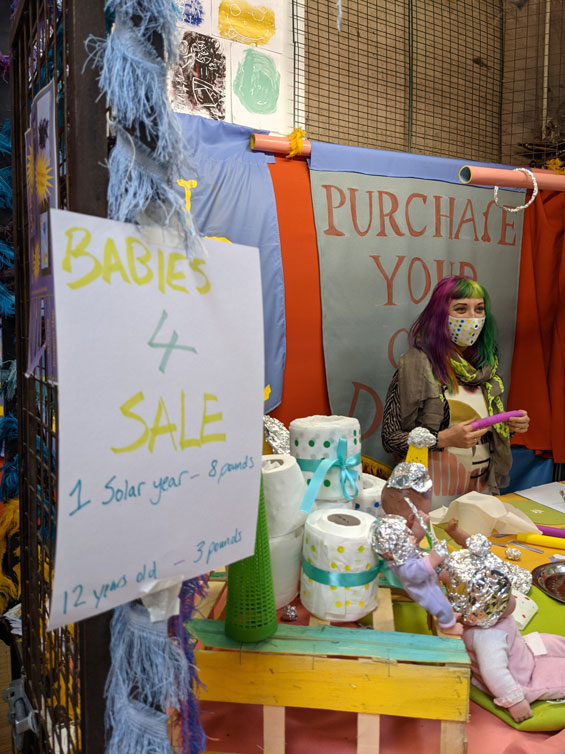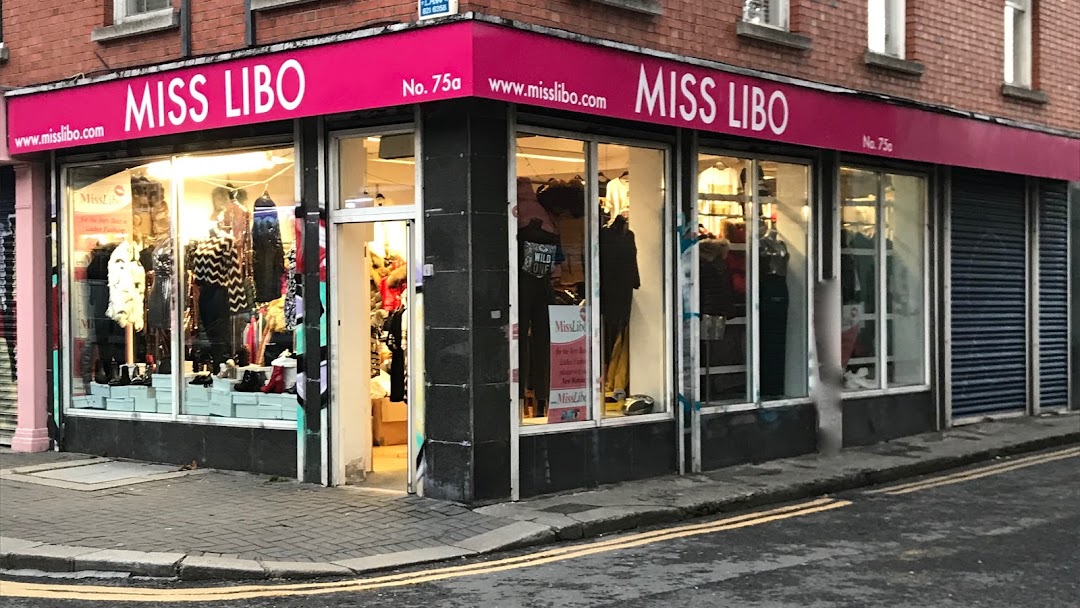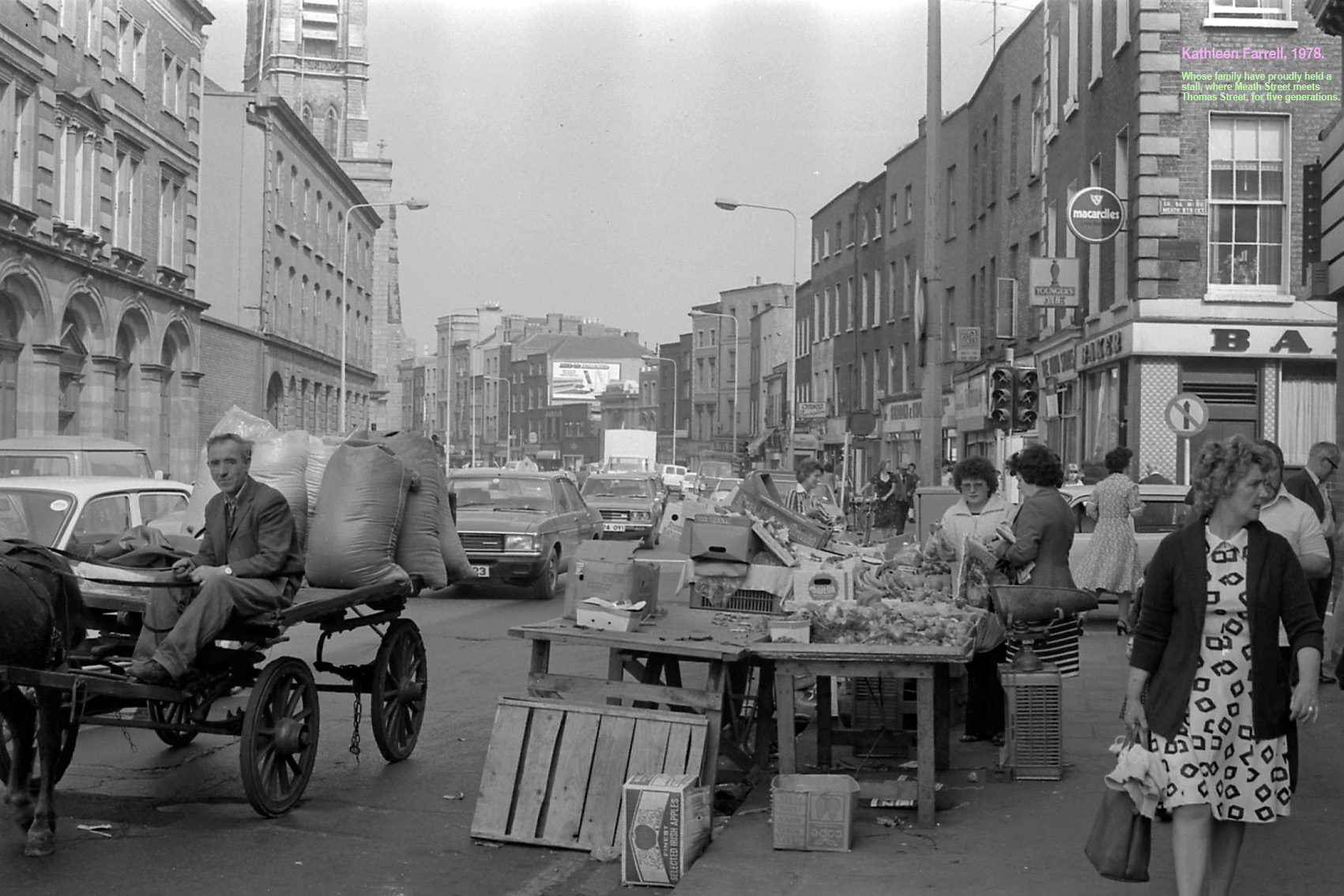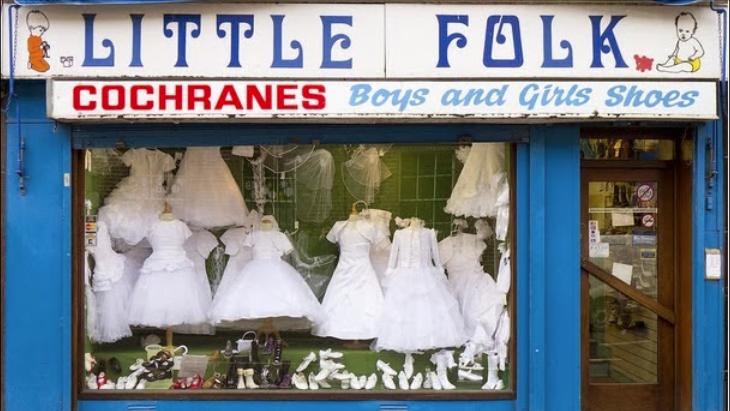River Liffey Places of Play
'Praising our Liffey water'.
A performative intervention.
Flower Bucket, Flowers, Botany Weaving Fringe, Concrete, Rope, Liffey Water.
Using a flower bucket borrowed from Kathleen and her family, 5th generation traders within the Liberties, the artists praise the water that birthed Dublin City, the river Liffey.
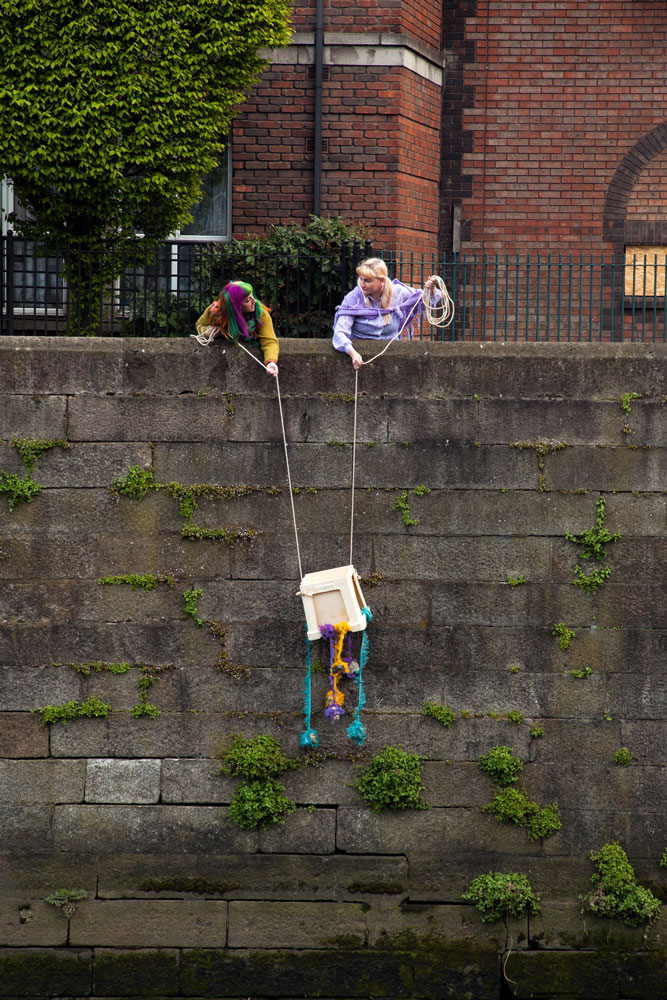

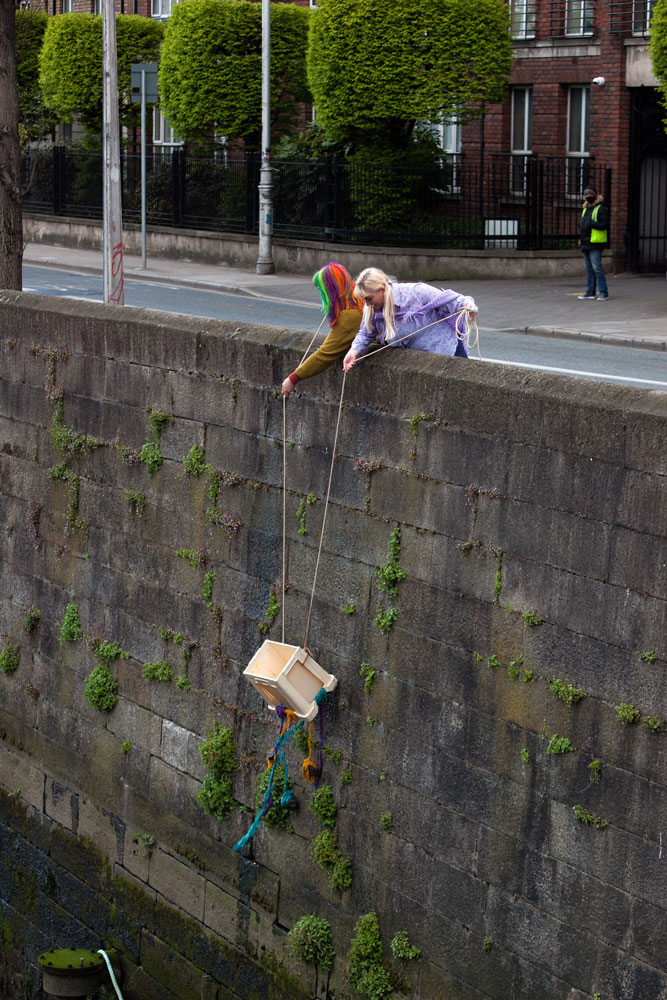
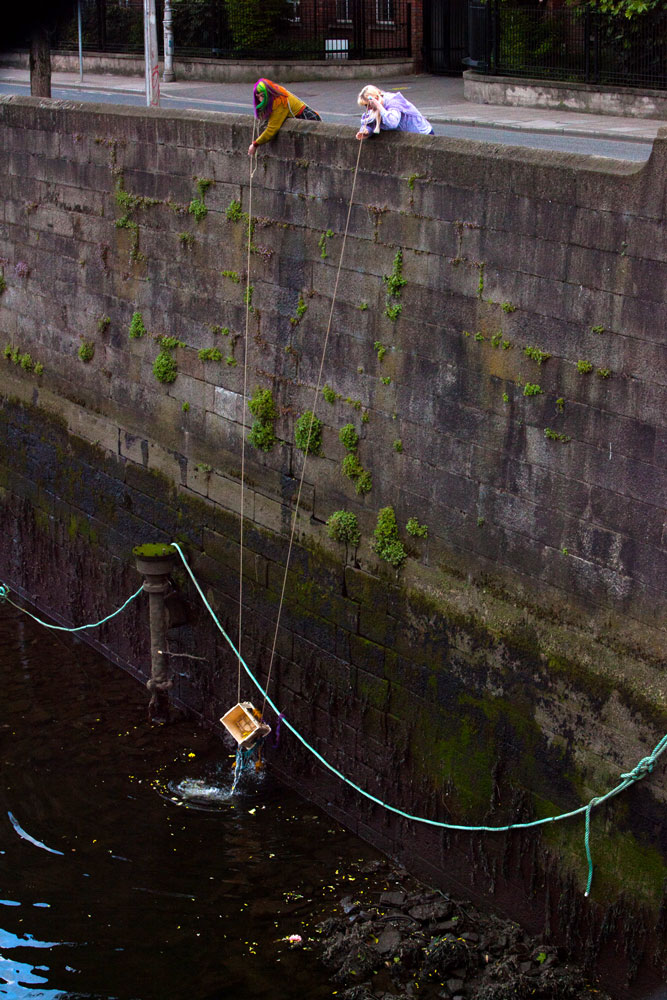


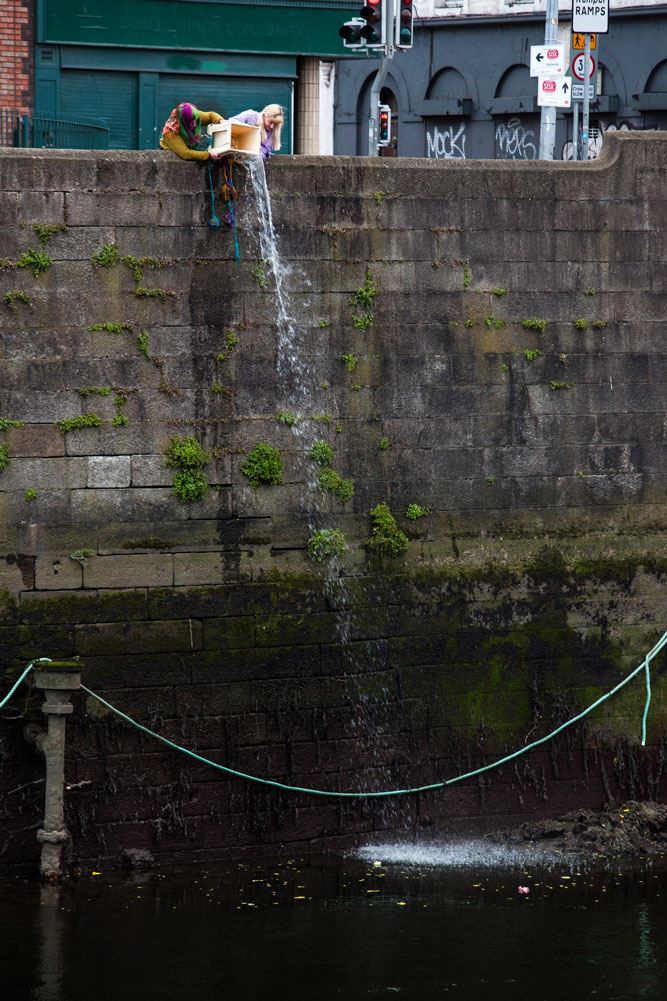
Iveagh Markets Places of Play
‘The Market’s Valuable Weight’
Performative intervention
Kathleen’s flower bucket, water, oats, rope, toilet paper, cardboard tubes, steel plate, Botany Weaving Mill fringe, fabric and thread cones.
Artists wearing their handmade aprons helping each other weigh oats, an important export to Ireland's economy for centuries and preparing them for oat balls.
History
The Iveagh Market is a former indoor market built in the Edwardian architectural style on Francis Street and John Dillon Street in The Liberties neighbourhood of Dublin, Ireland.
It was open from 1906 until the 1990s. As of 2020, the site remains derelict despite attempts to redevelop the site into a new food market complex.
The site for the markets was cleared by 1900, with the objective of the new indoor market to offer local traders a dry place to sell vegetables, fish, and clothes. It was built by the Iveagh Trust, which was initially a component of the Guinness Trust, founded in 1890 by Lord Iveagh.
The building was designed and built by Frederick G. Hicks. Construction started in 1902 and the market opened in 1906. Maintenance of the market was entrusted to Dublin Corporation (now Dublin City Council).
The market was split into a dry market facing Francis Street and a wet market in the rear facing John Dillon Street. The dry market sold clothes while the wet market sold fish, fruit and vegetables.
An adjoining building housed laundry, disinfecting and delousing facilities. This was an innovation in the Dublin market world, and was influenced by Iveagh's sponsorship of the Lister Institute of Preventive Medicine in London a decade earlier.
https://en.m.wikipedia.org/wiki/Iveagh_Markets
Iveagh Market Heads
This series of stone heads “remains enigmatic”, according to Samantha L. Martin-McAuliffe, a lecturer in the School of Architecture at University College Dublin.
They are, however, “variously described as being representations of the continents, or the nations that were trading with Ireland at the turn of the twentieth century”, she notes in The Ethics of Giving and Receiving: a Study of the Iveagh Markets, Dublin.
One wears a turban, another a brimless, flat hat, similar to a kufi. Others wear floral crowns.
UCD’s Martin-McAuliffe, referencing an Irish Builder article from 1906, writes that at the centre “is Erin, and on the other side [are] Turkey, Europe, Asia, Africa, America, Spain and an Israelite”.
https://dublininquirer.com/2018/04/04/brushing-up-the-traders-of-the-world

St Patricks Park Places of Play
‘A Modest Recipe’
Performance Intervention
Baby dolls, oats, water, Kathleen’s flowers, Botany Weaving Mill fabric, large bronze fork and spoon.
Artists and audience respond to Jonathan Swift’s ‘Modest Proposal’ by satirically preparing a delicious recipe he wrote for baby stew in a fountain attached to the grounds of the cathedral he was once the Dean of.
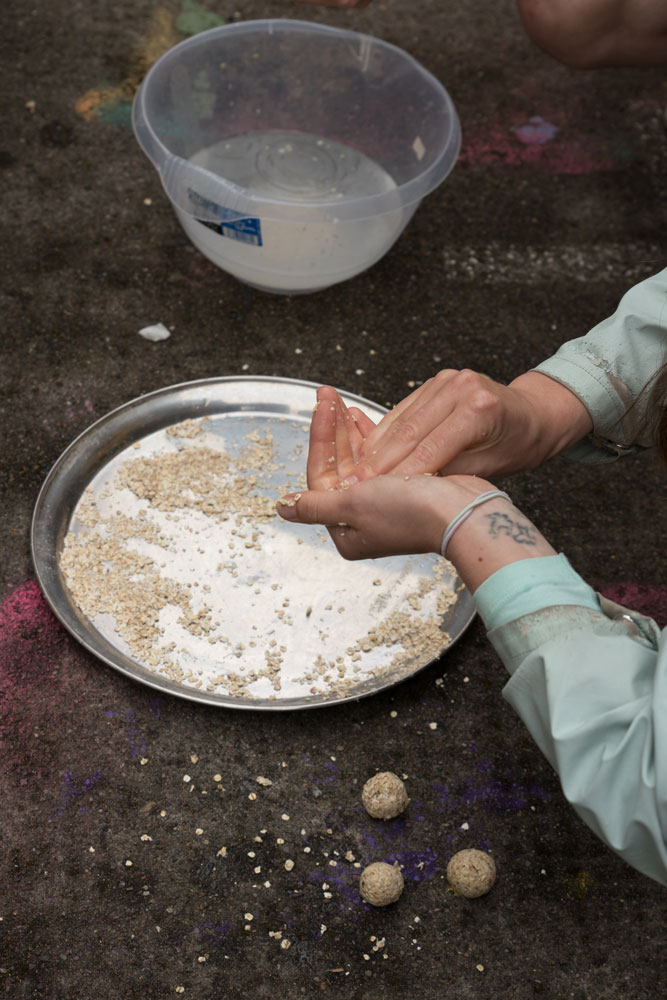
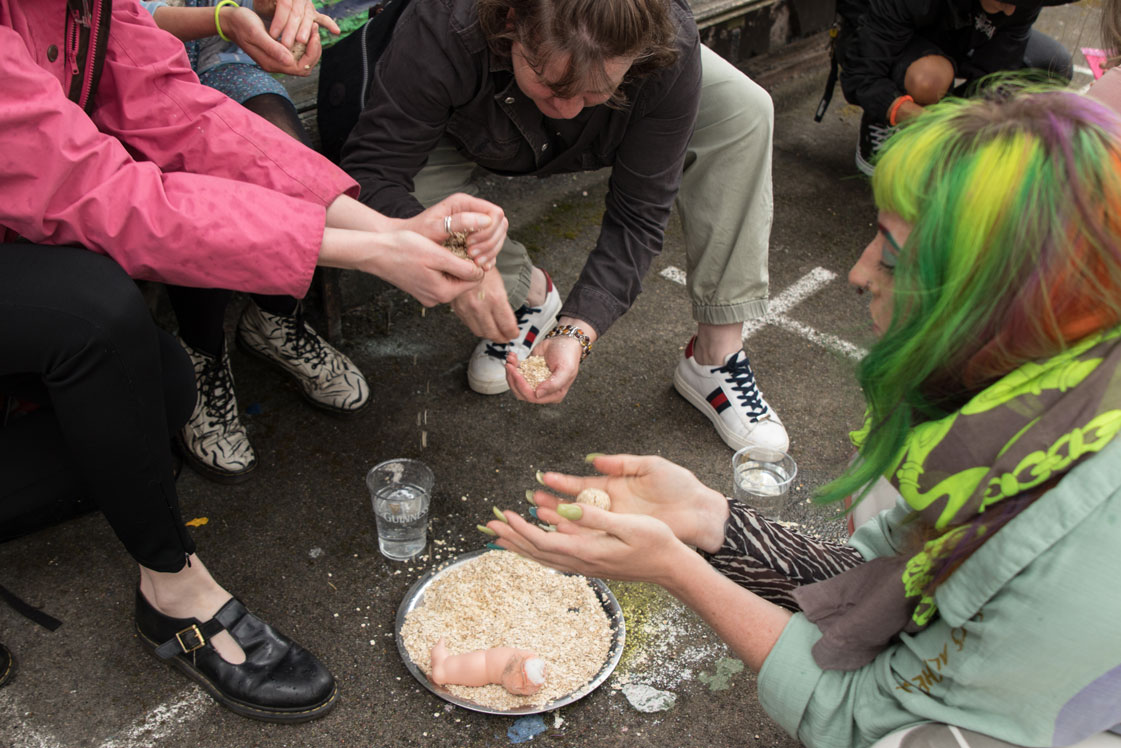
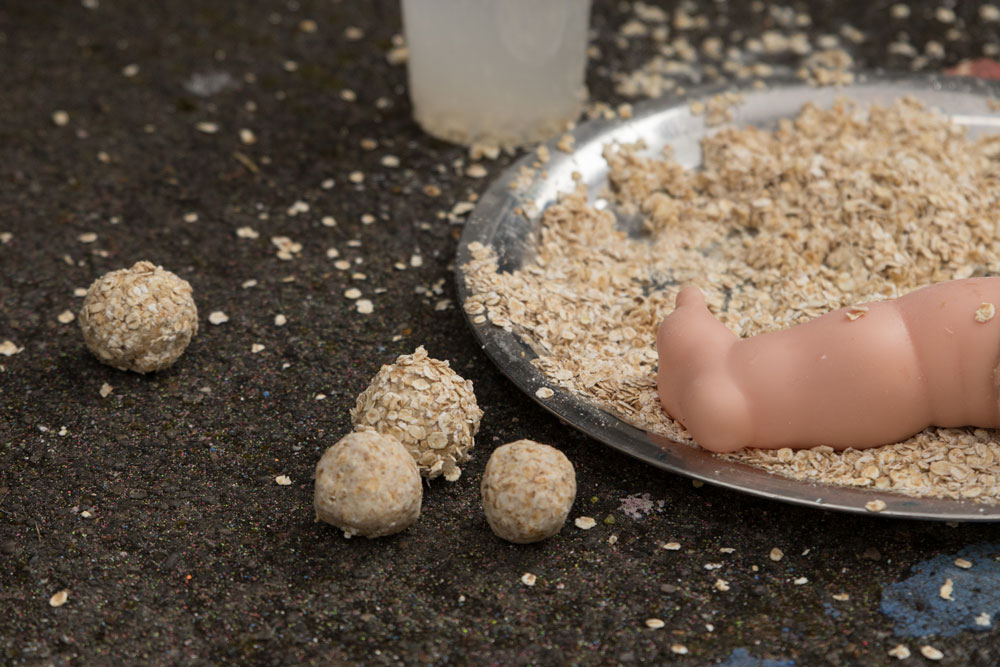
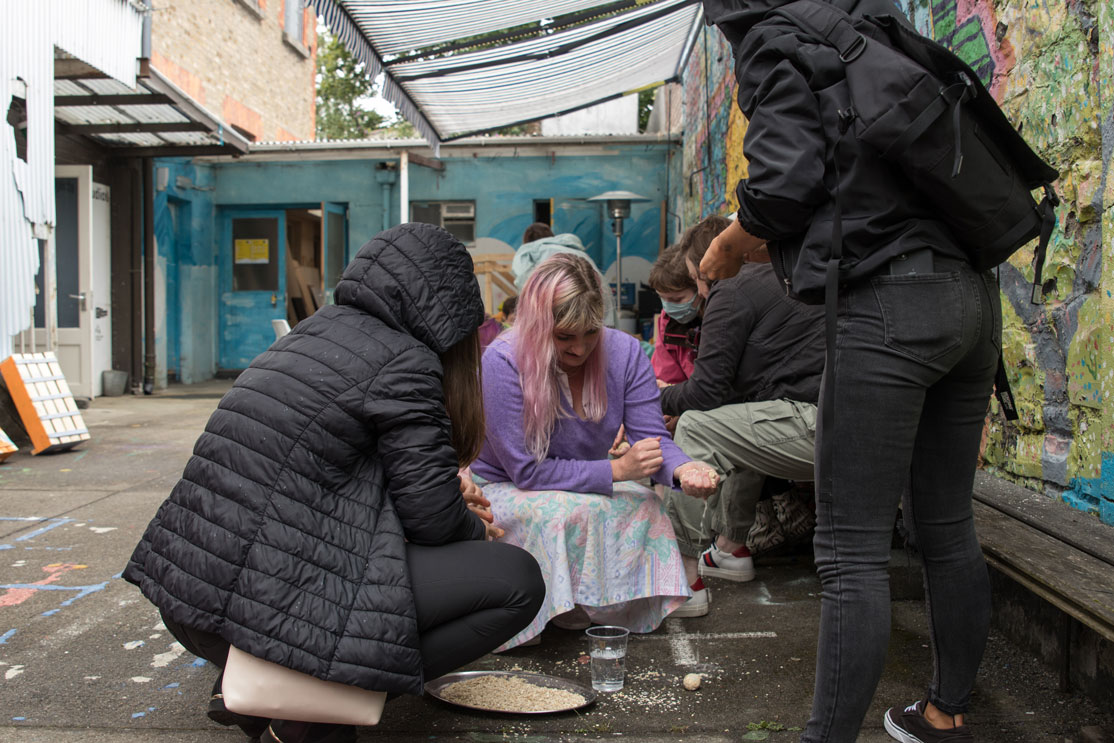
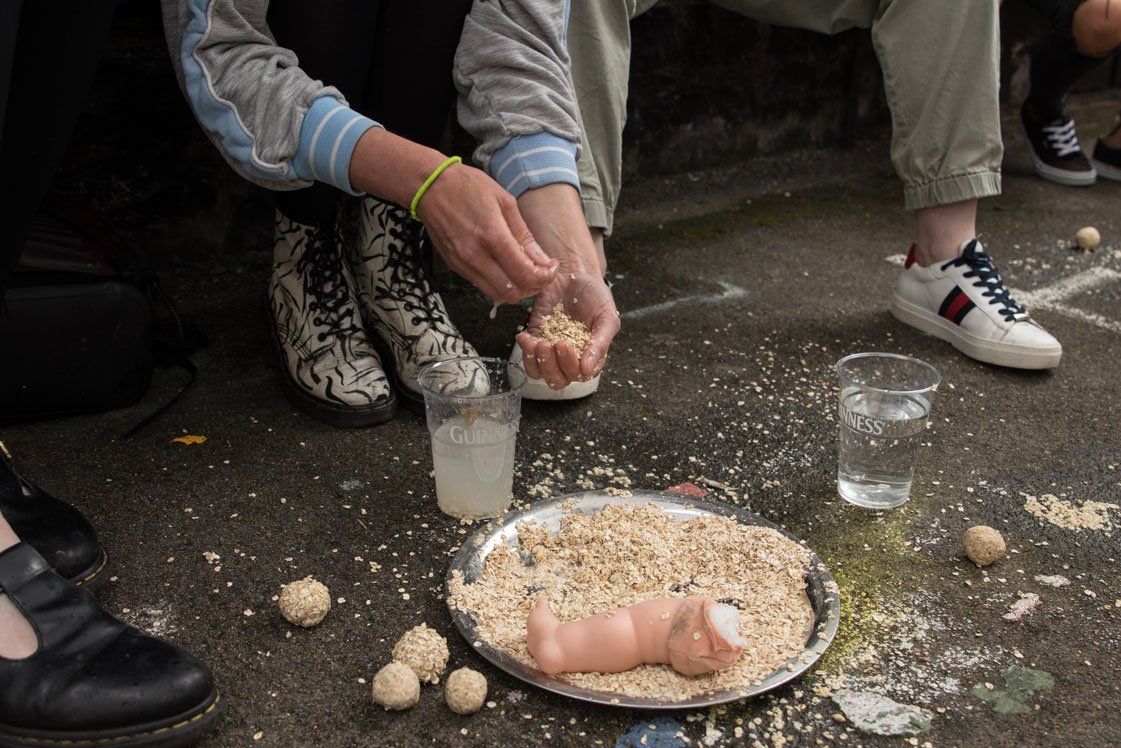

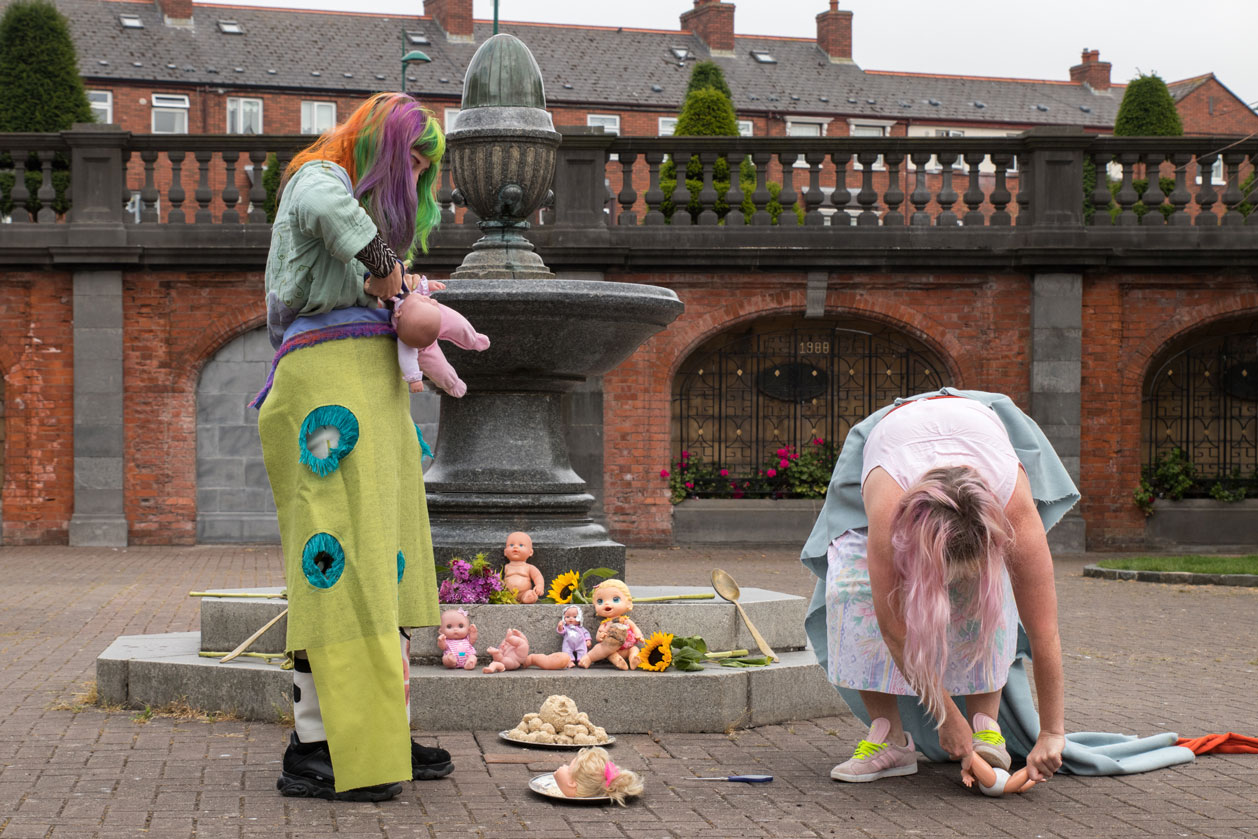
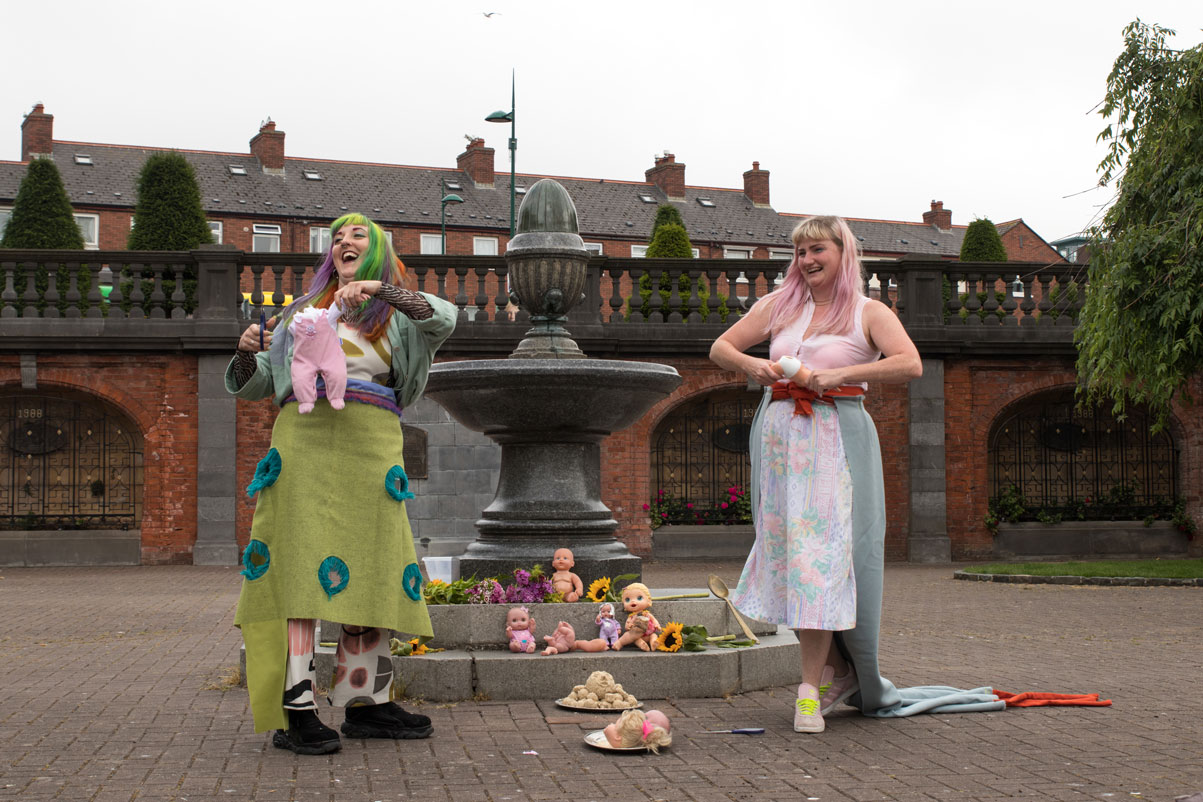
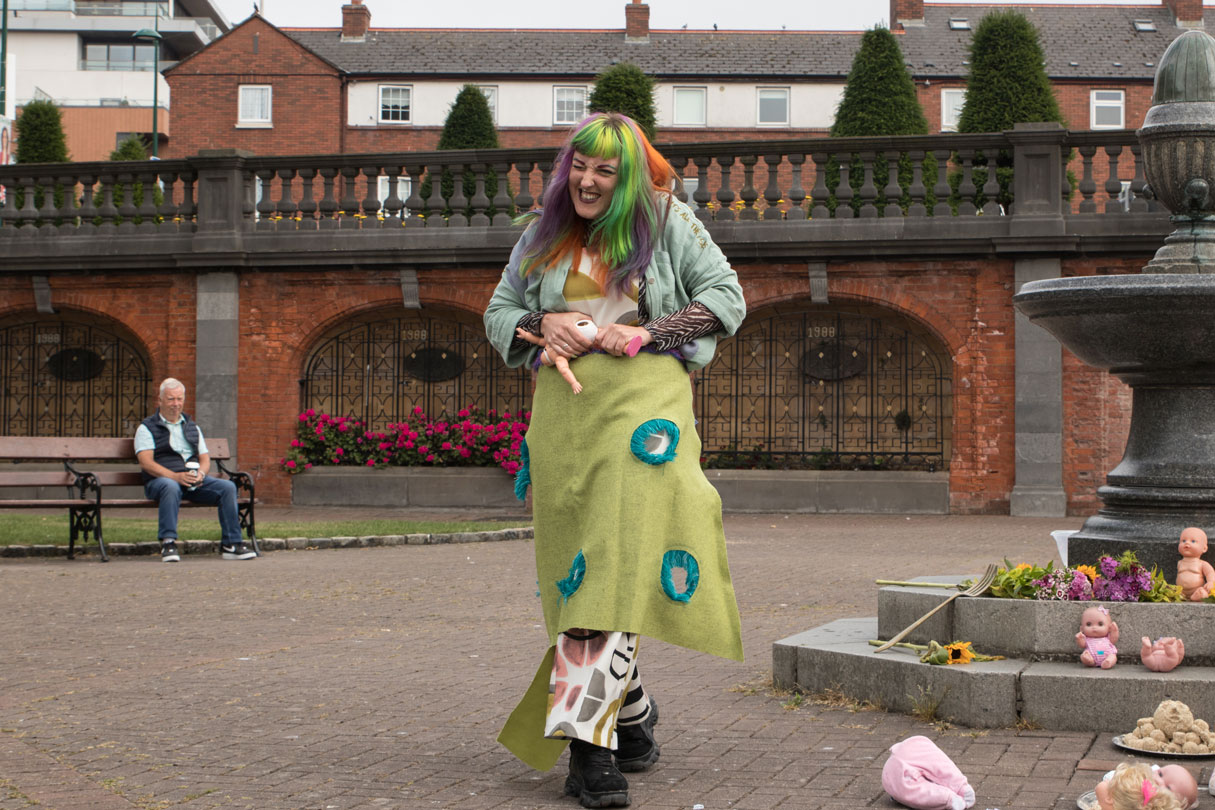

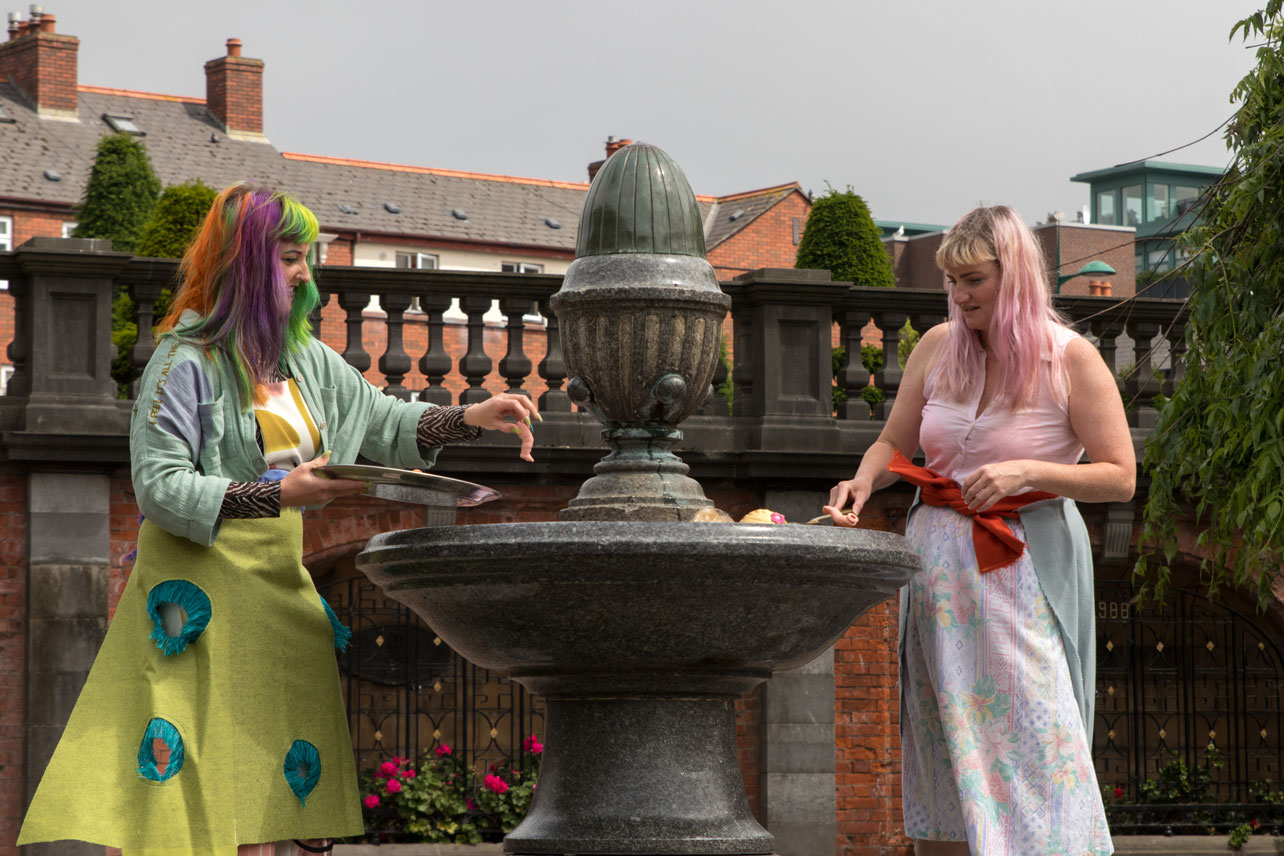
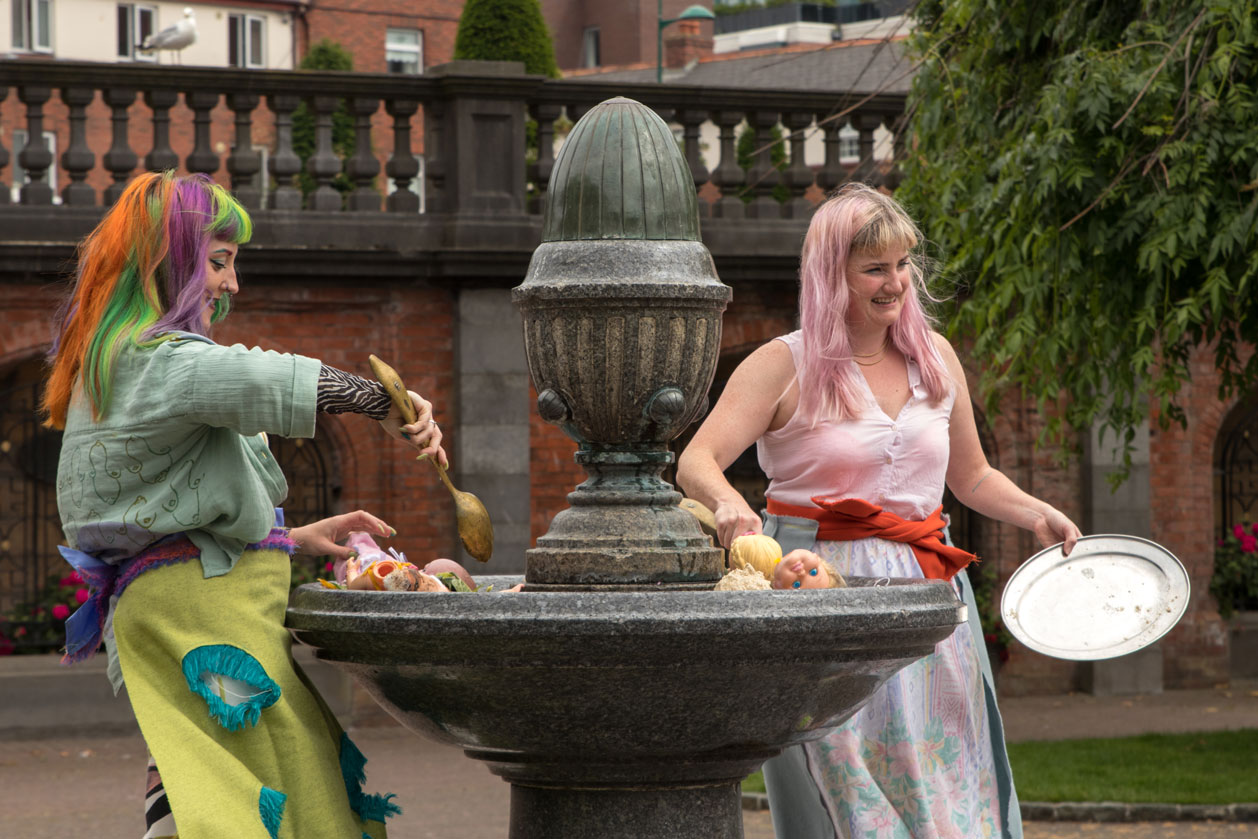

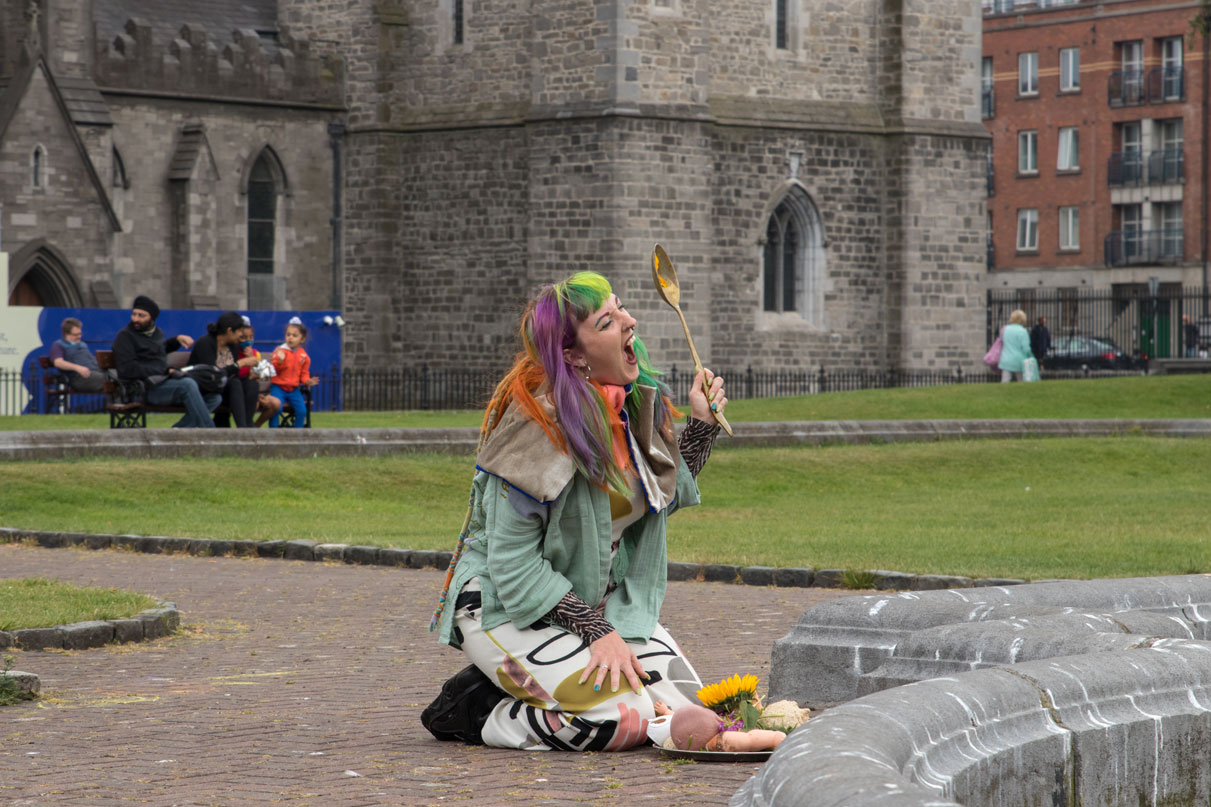
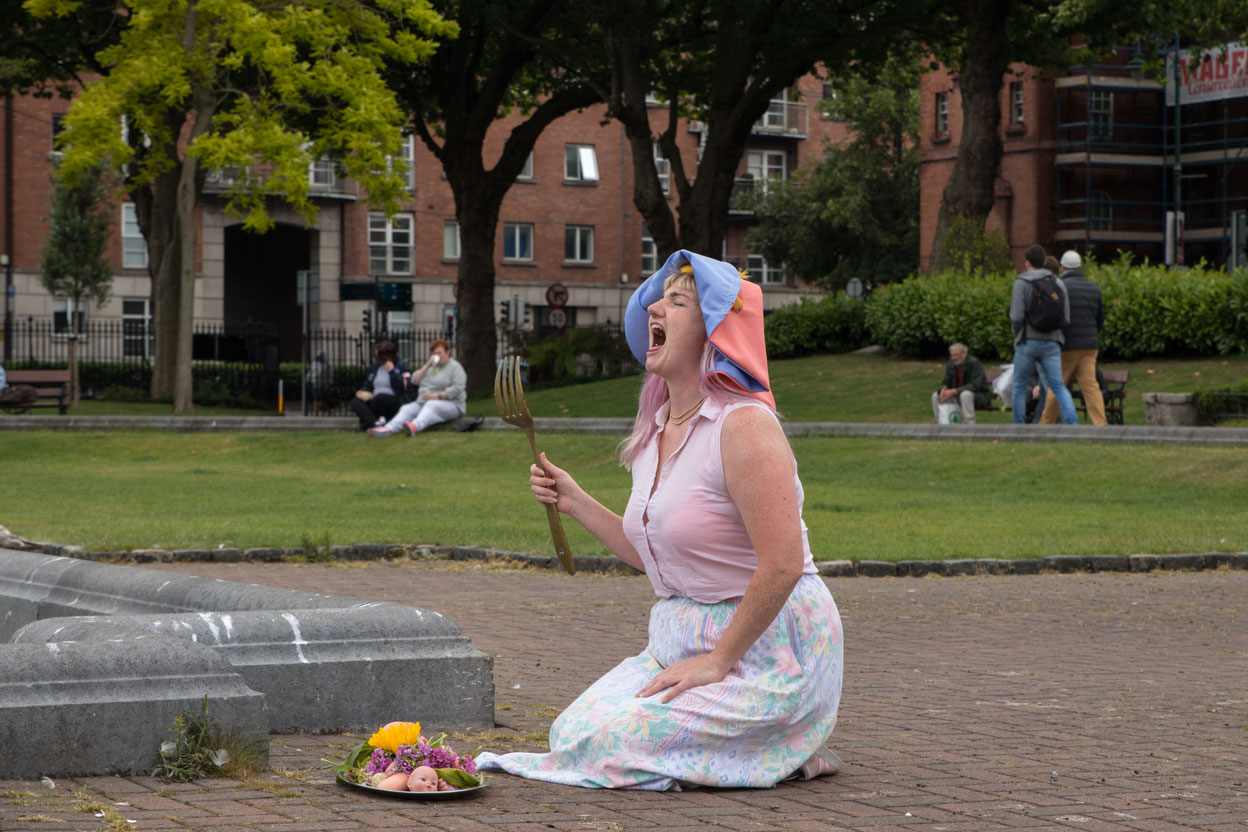
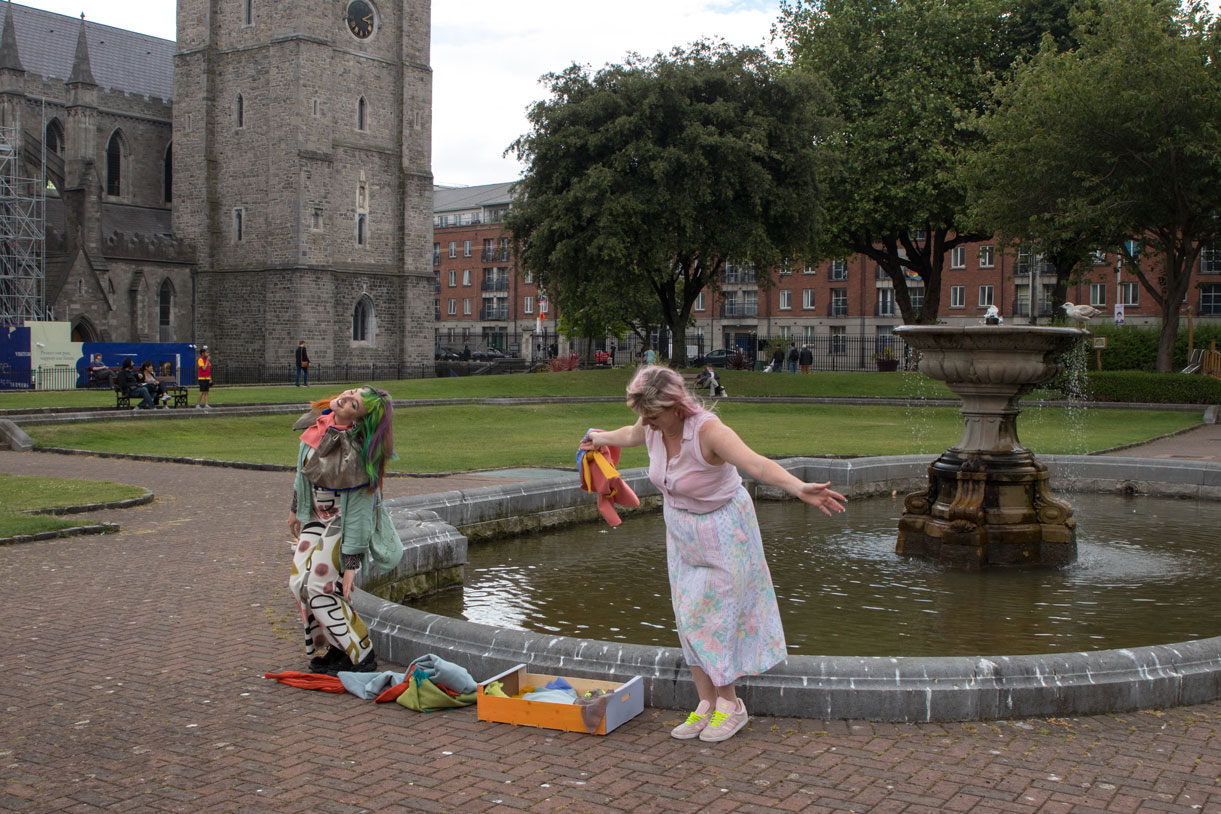
Weavers Square - Poems Sites of Research
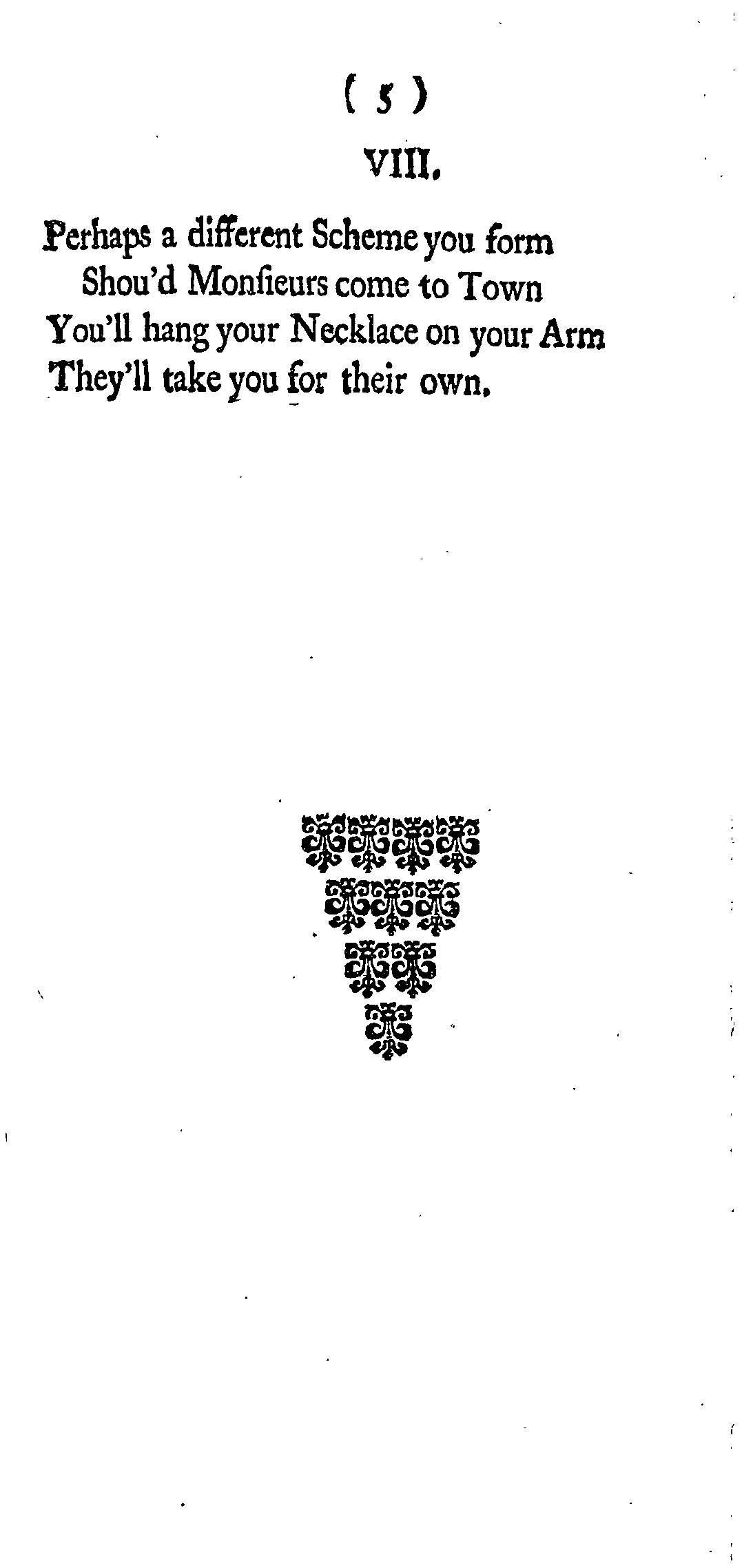
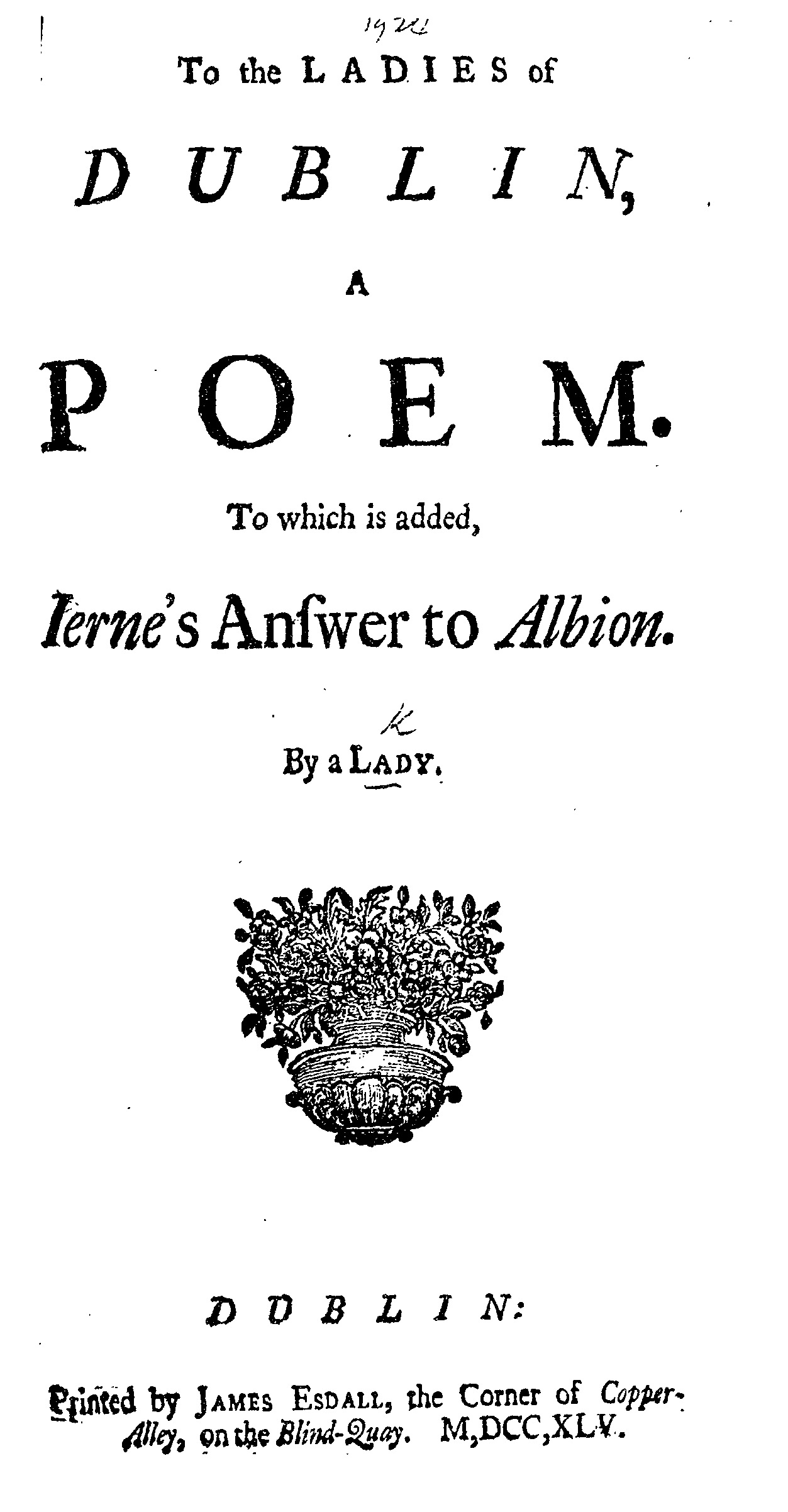
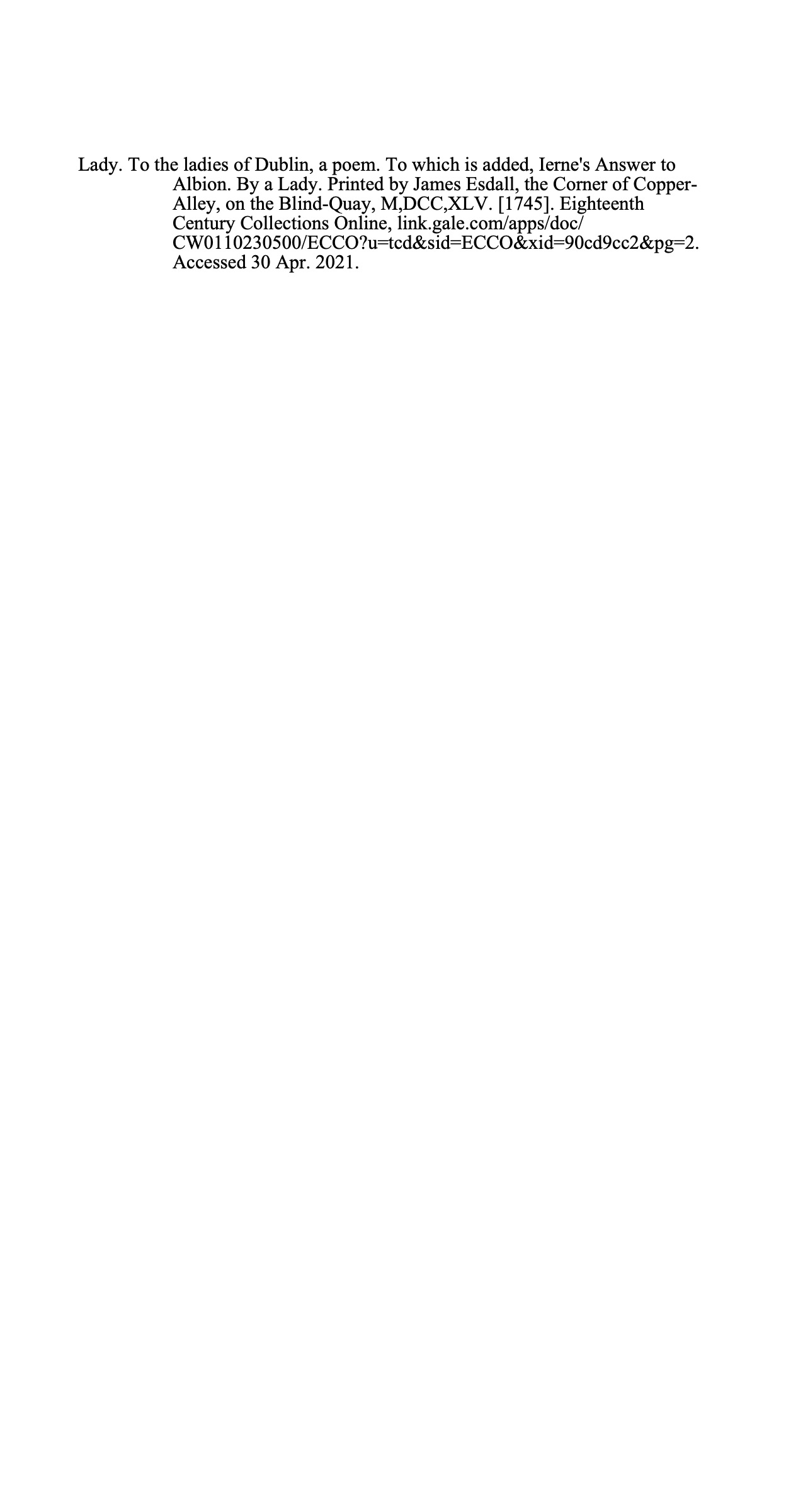
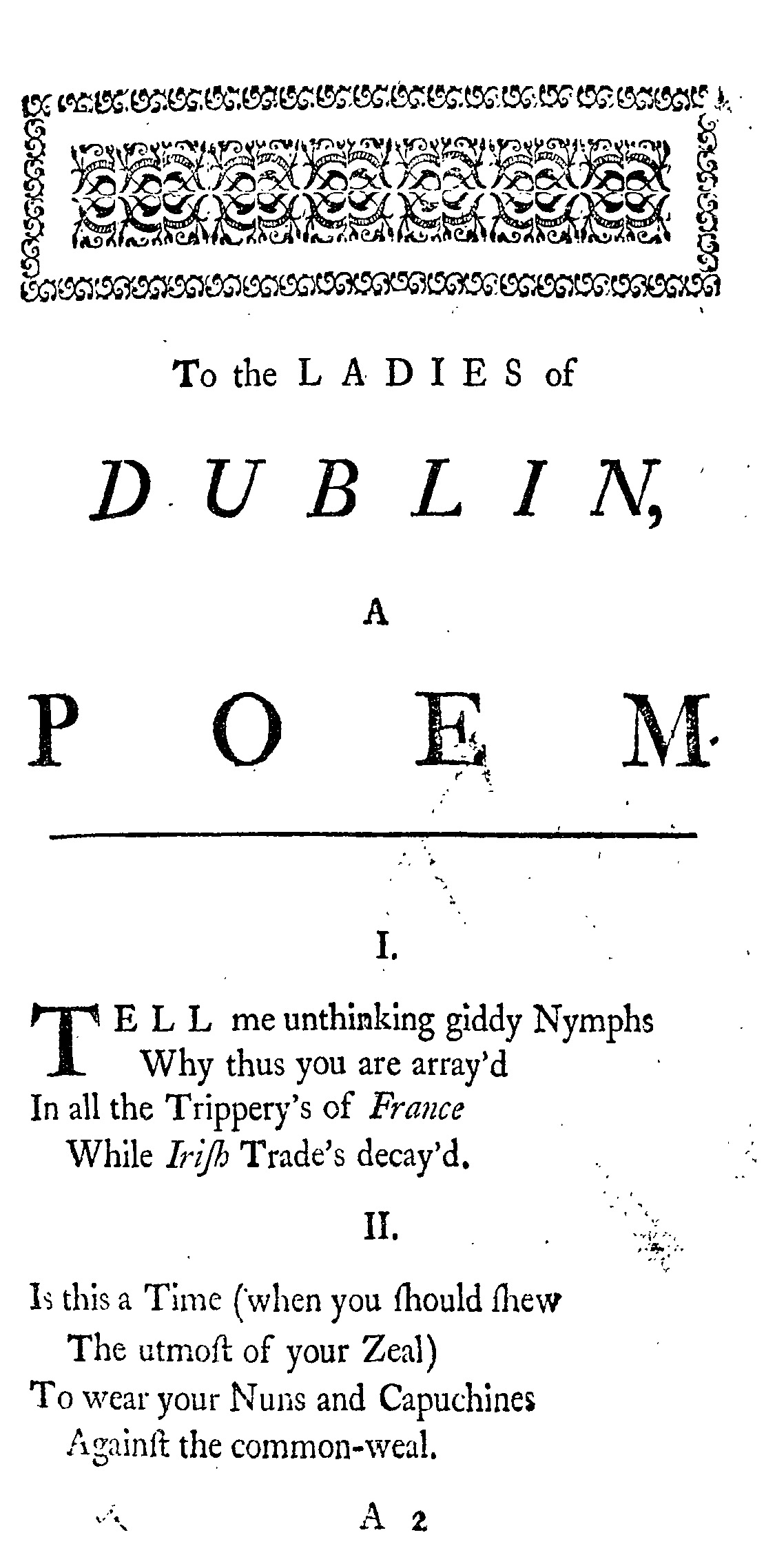
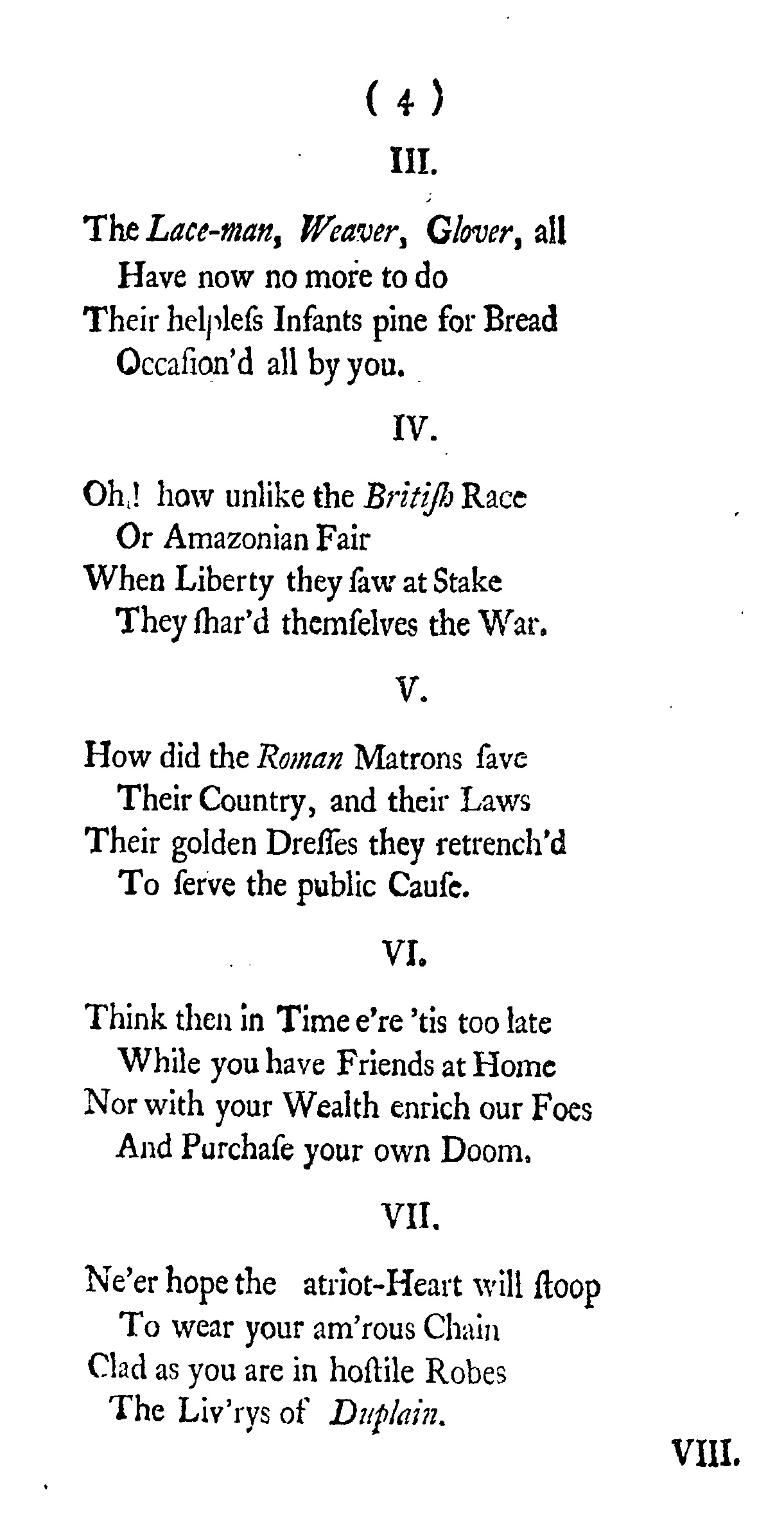
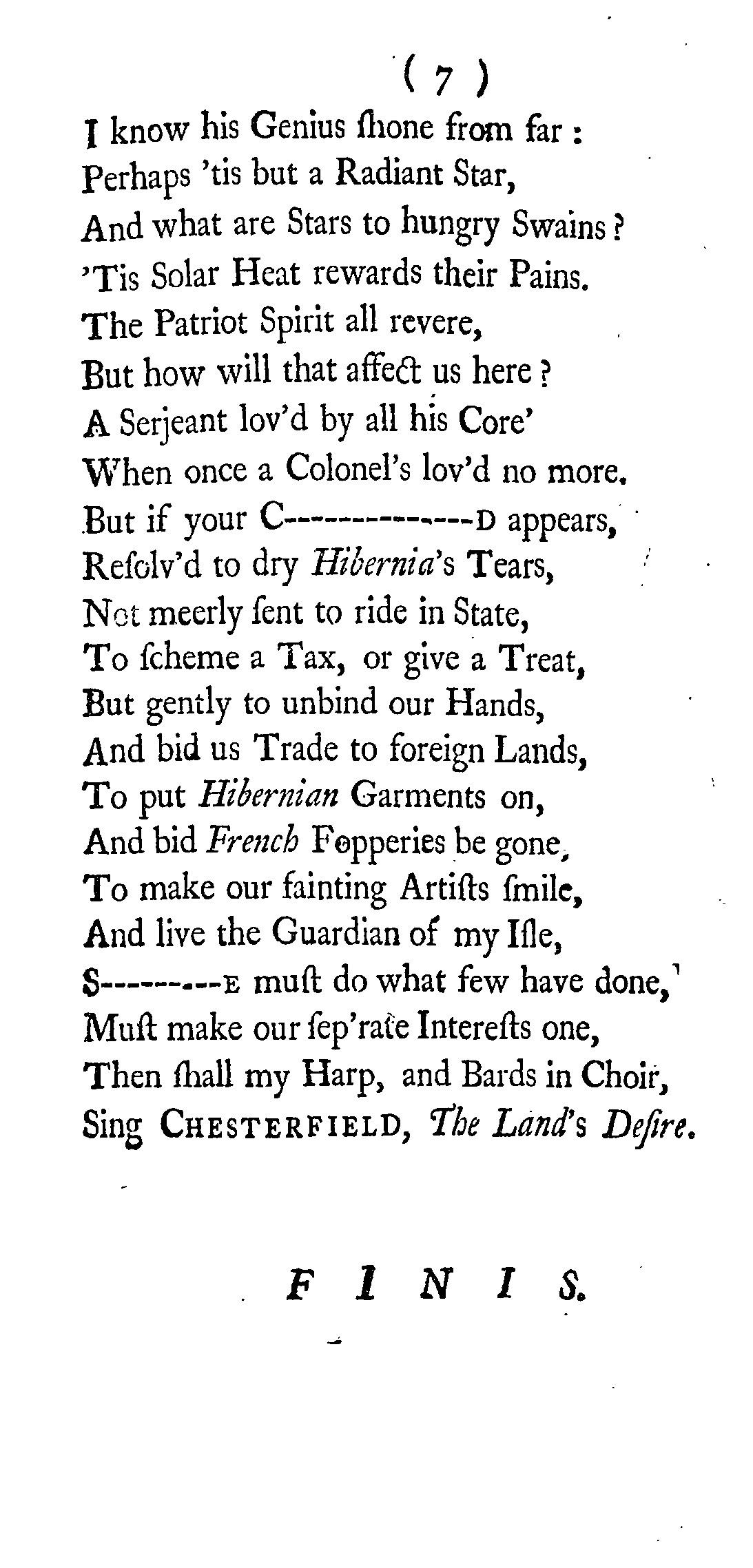
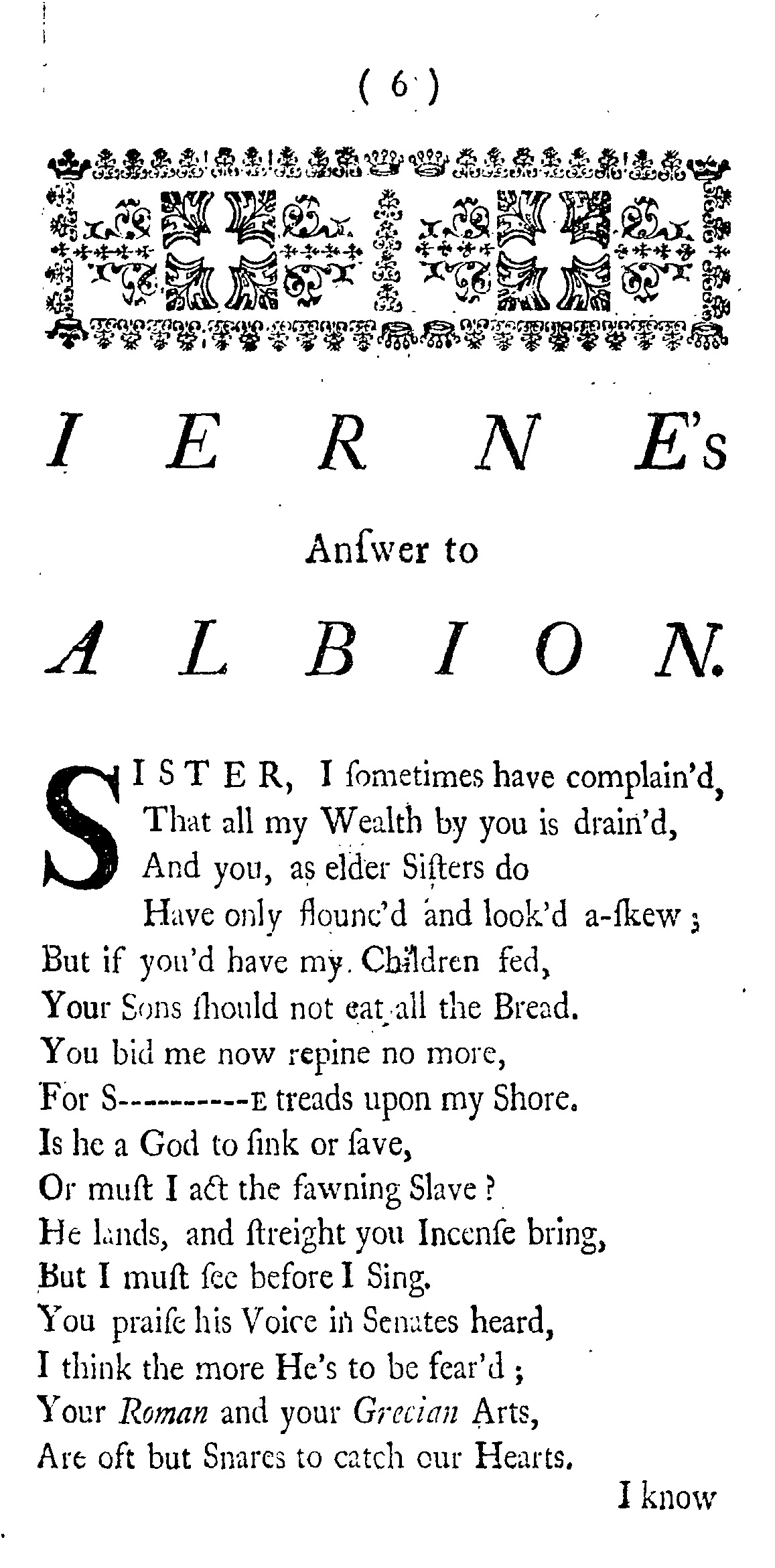
Zozimus Places of Play
‘Zozimus’ Beginning Ballad’
Performance intervention
Hawthorn walking stick, toilet paper dotted with bingo markers, pulpit made from pallets, Kathleen’s flowers.
Audience ordered by artists to wheel them in their pulpit to the birthplace of Zozimus. Using a hawthorn walking stick, similar to his own, they hit dotted toilet paper to unravel it in the air while reciting his songs. The audience and artists weave together their stories, toilet paper and flowers up Zozimus’ street.
History
Michael J Moran (c. 1794 – 3 April 1846), popularly known as Zozimus, was an Irish street rhymer. He was a resident of Dublin and also known as the "Blind Bard of the Liberties" and the "Last of the Gleemen".
The Songs of Zozimus
Ye sons and daughters of Erin,
Gather round poor Zozimus, yer friend;
Listen boys, until yez hear
My charming song so dear.
Gather round me bois, will yez
Gather round me
And hear what I have to say,
Before ould Sally brings me
My bread and jug of tay.
I live in Faddle Alley,
Off Blackpitts near the Coombe;
With my poor wife called Sally,
In a narrow, dirty room.
Gather round me, and stop yer noise,
Gather round me till my tale is told;
Gather round me, ye girls and ye boys,
Till I tell yez stories of the days of old;
Gather round me, all ye ladies fair,
And ye gentlemen of renown;
Listen, listen, and to me repair,
Whilst I sing of beauteous Dublin town


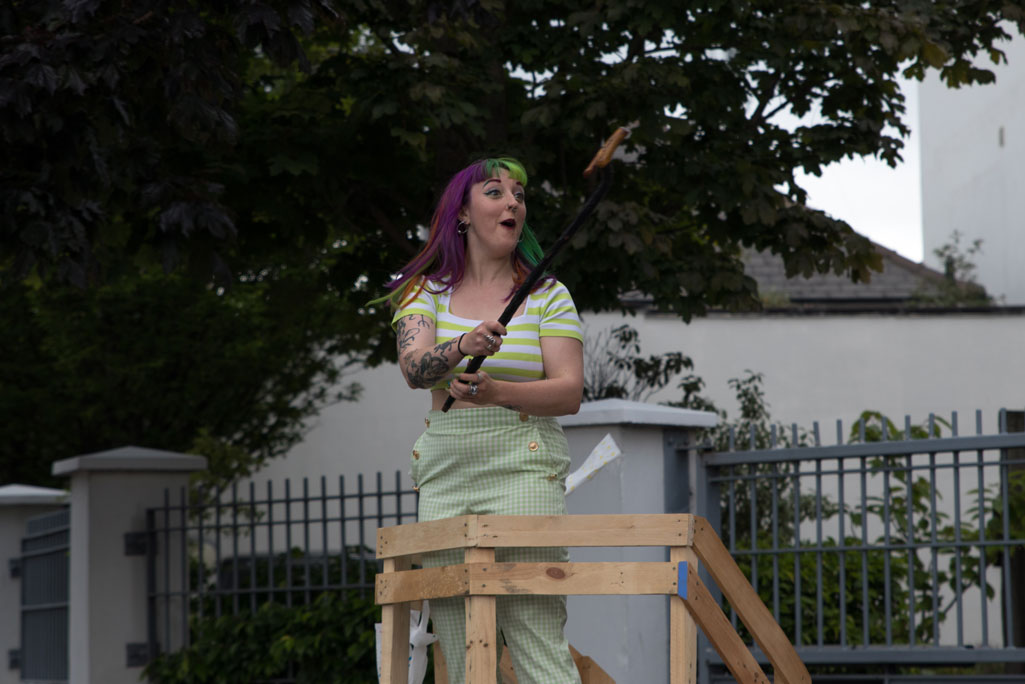


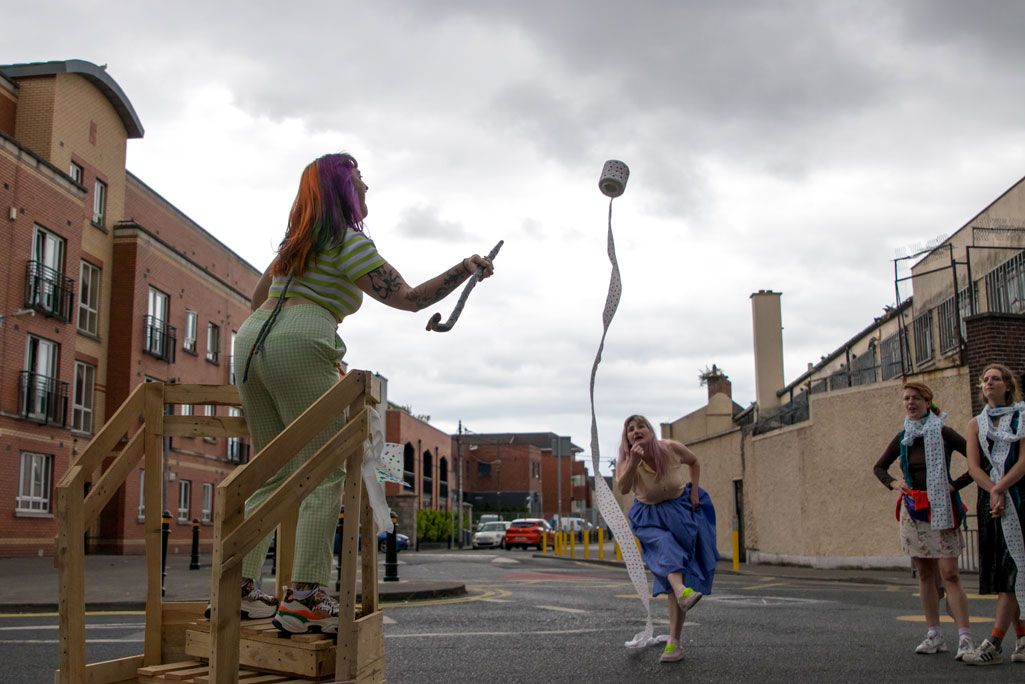

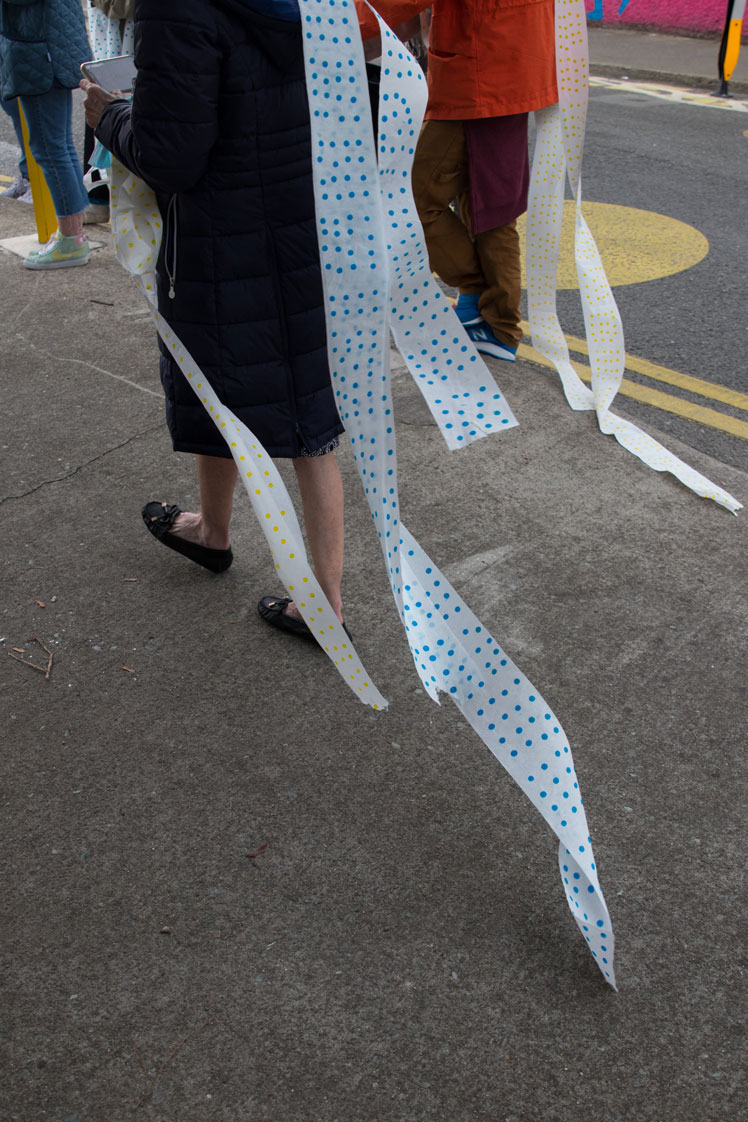
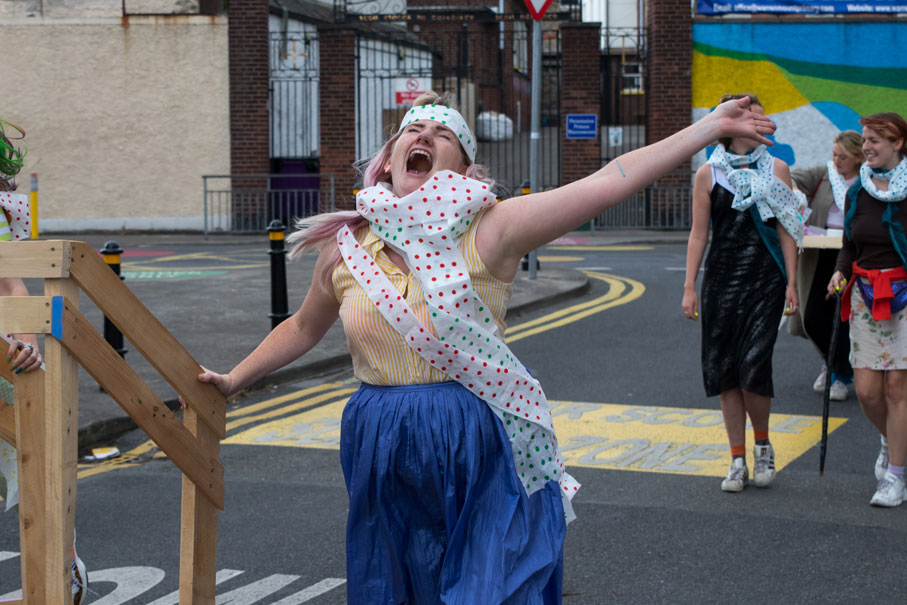



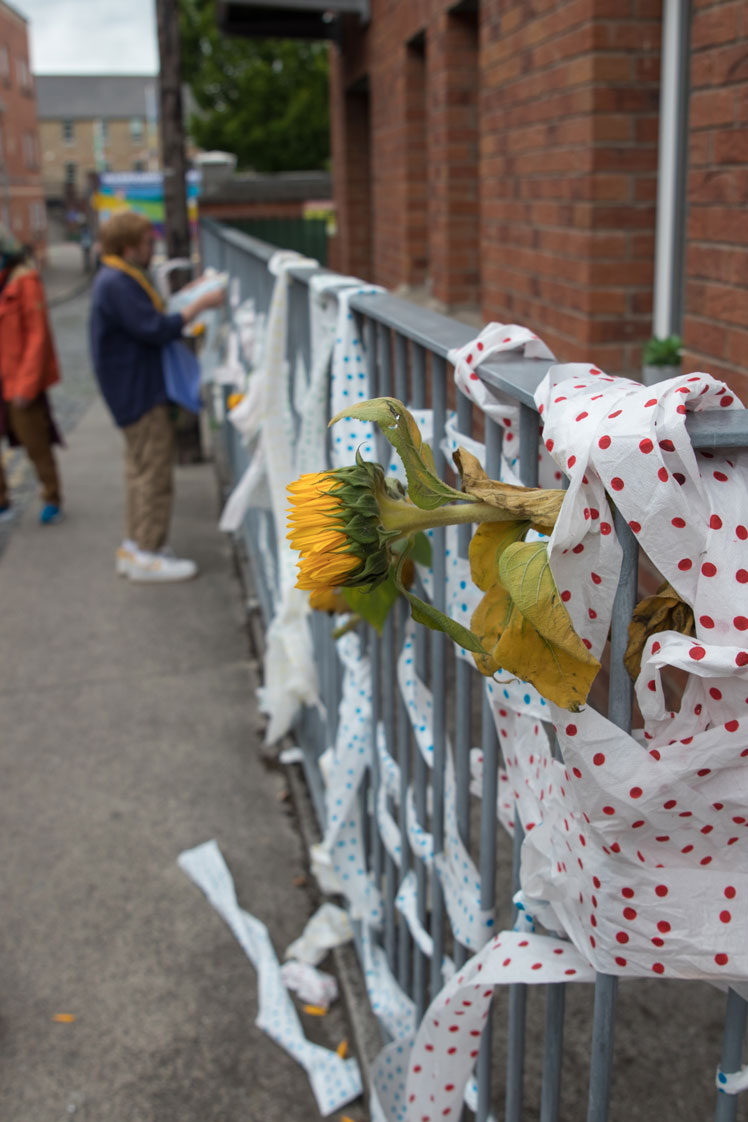

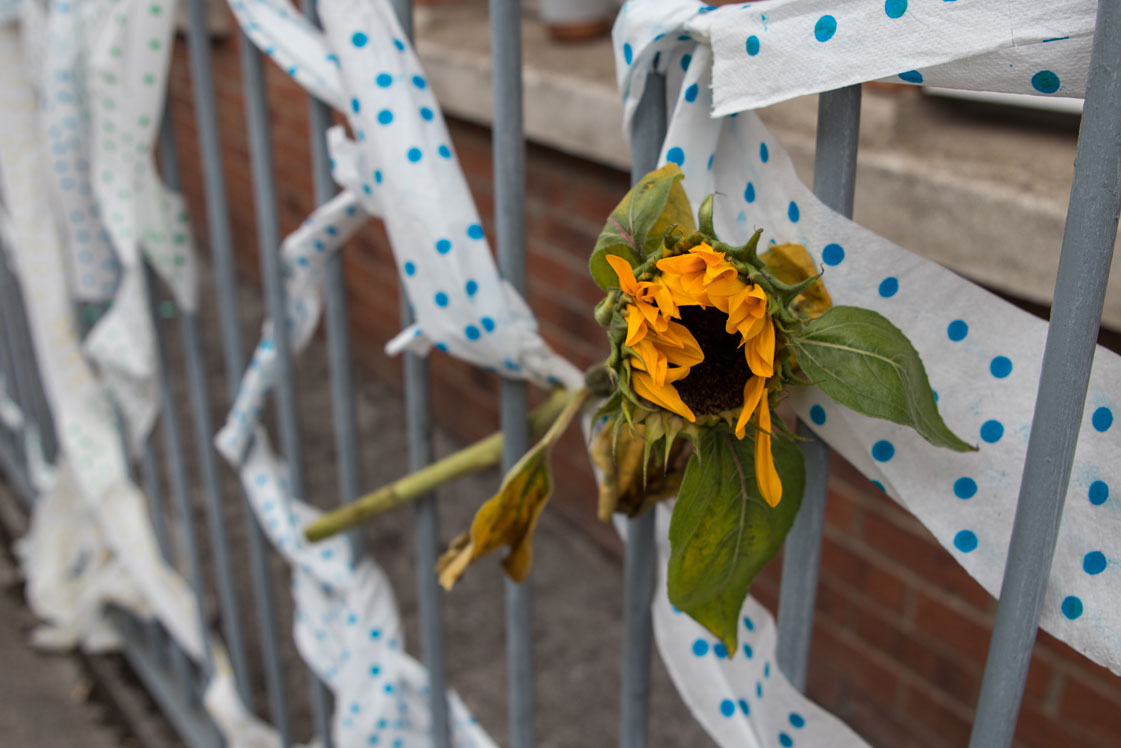
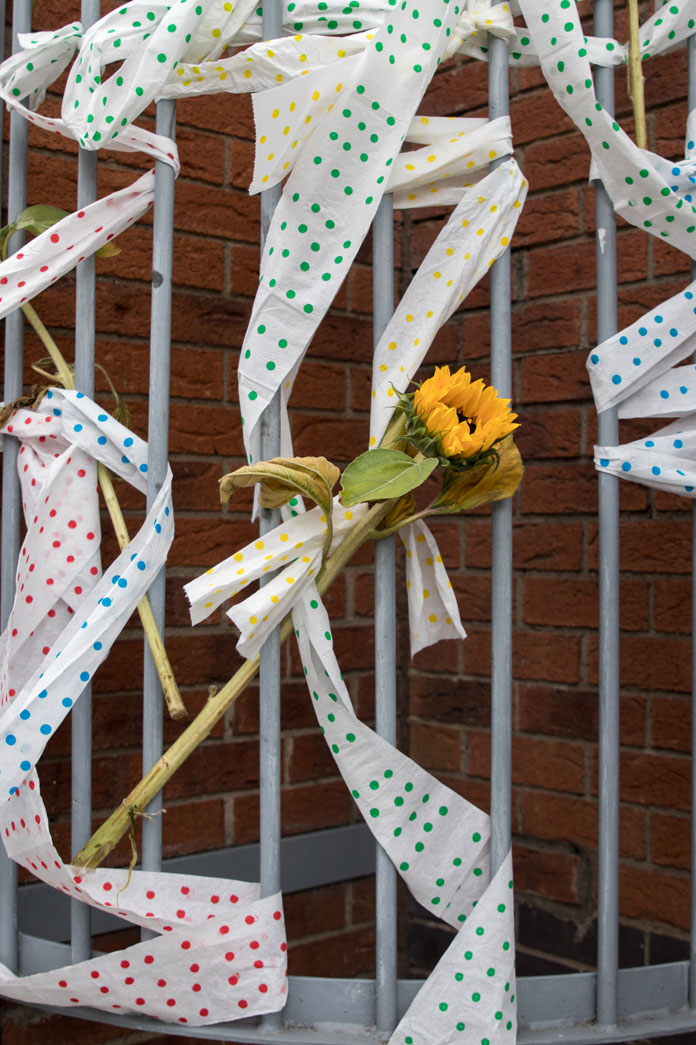
Pallas Projects Loving Locations

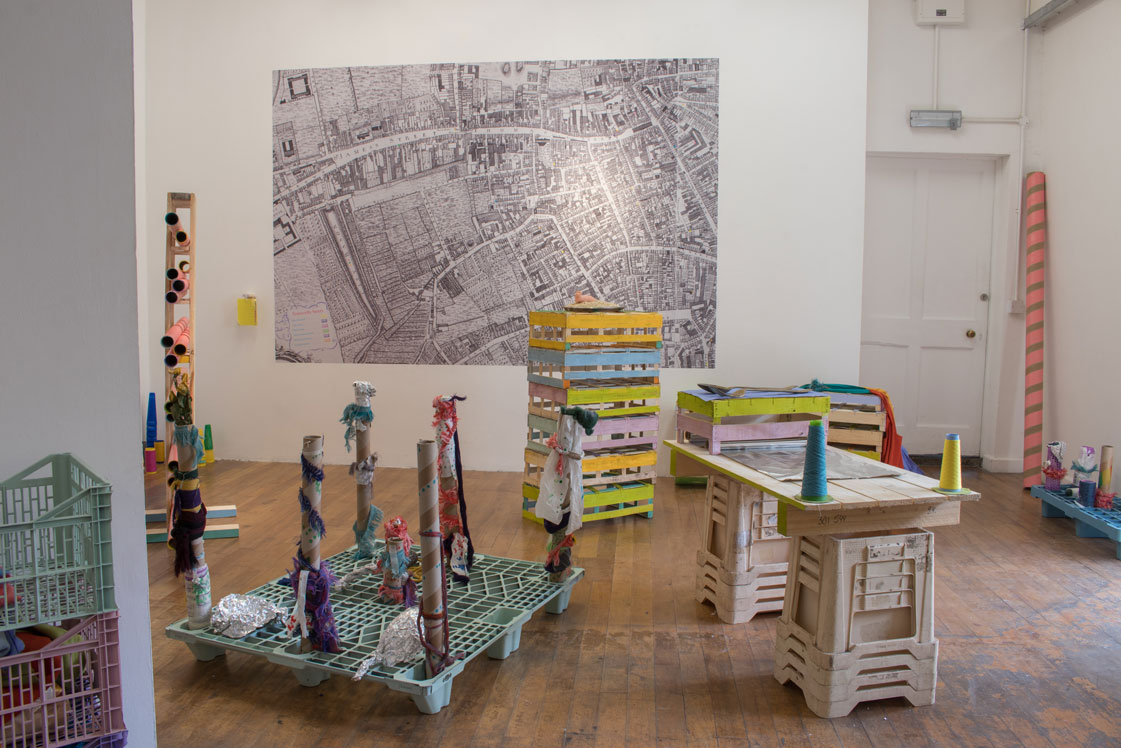
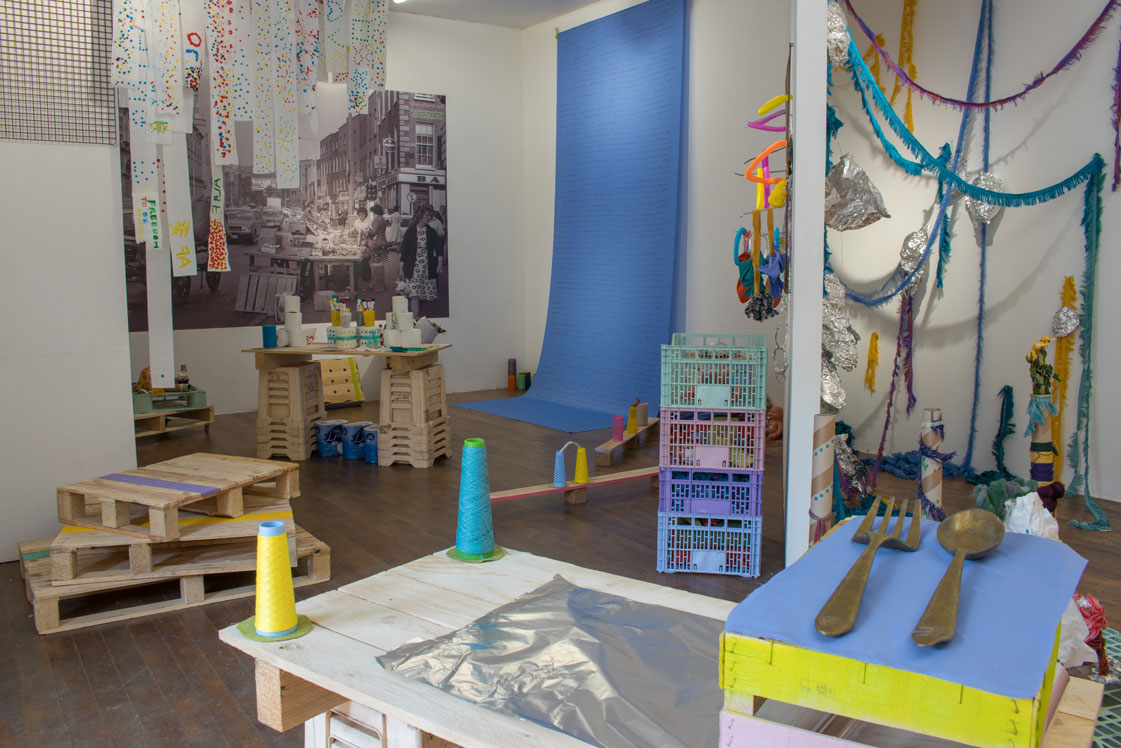


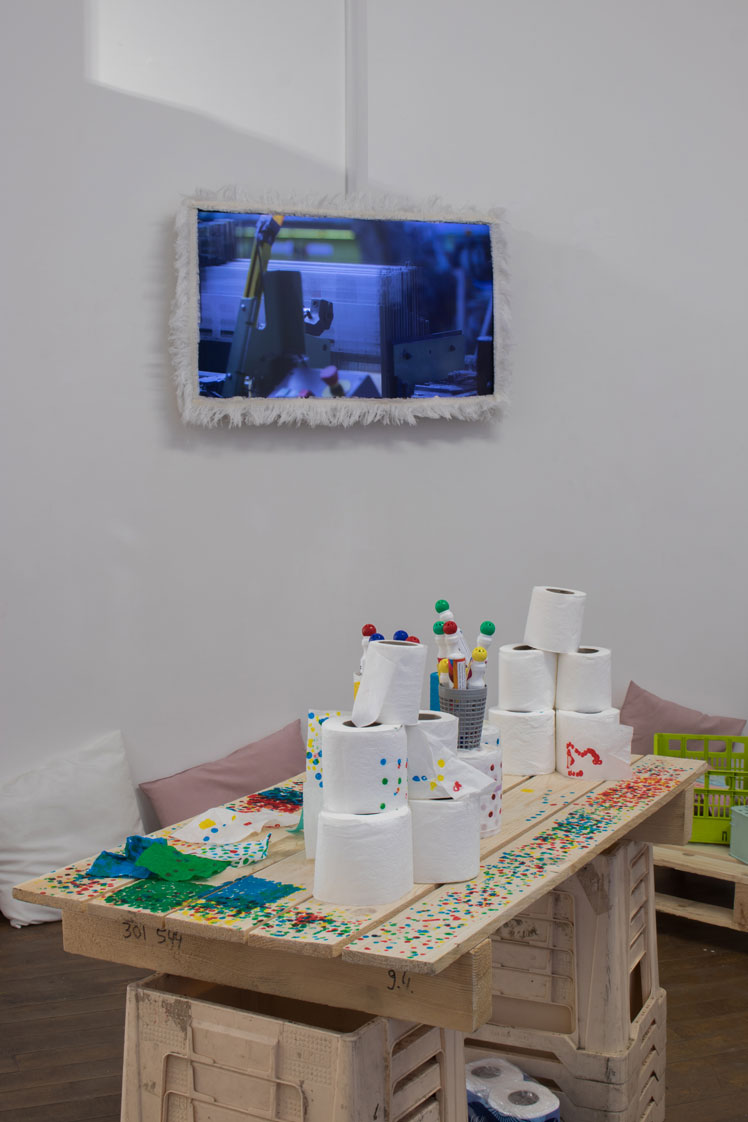



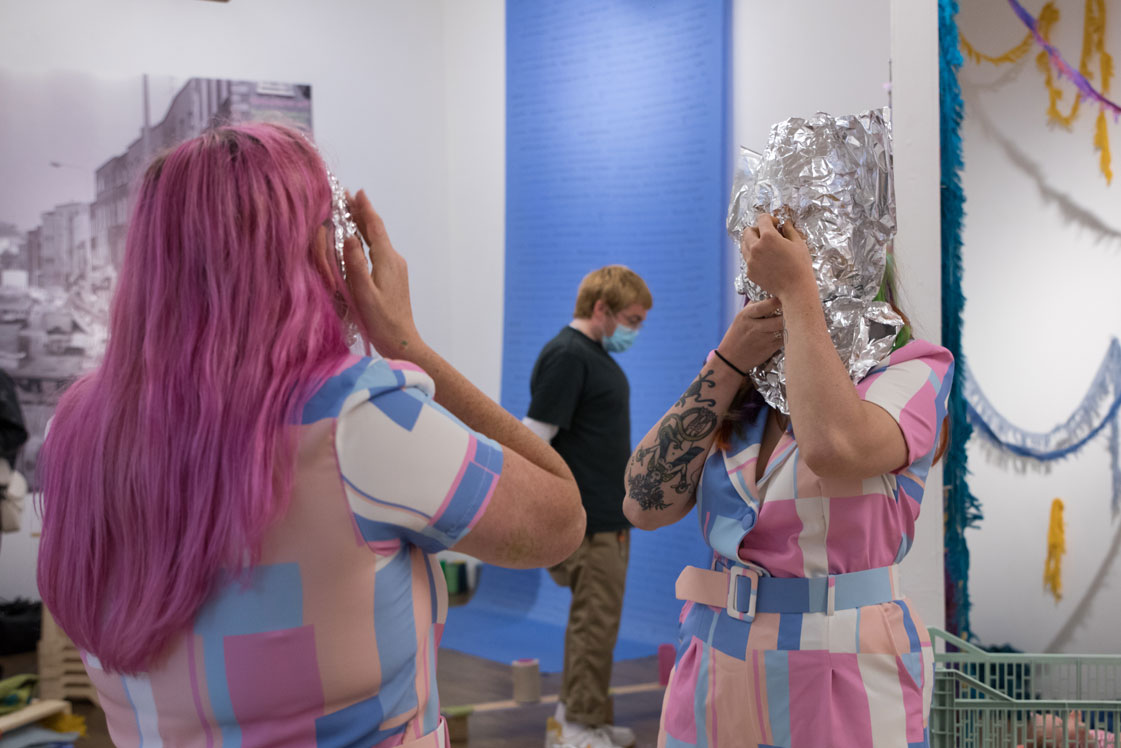

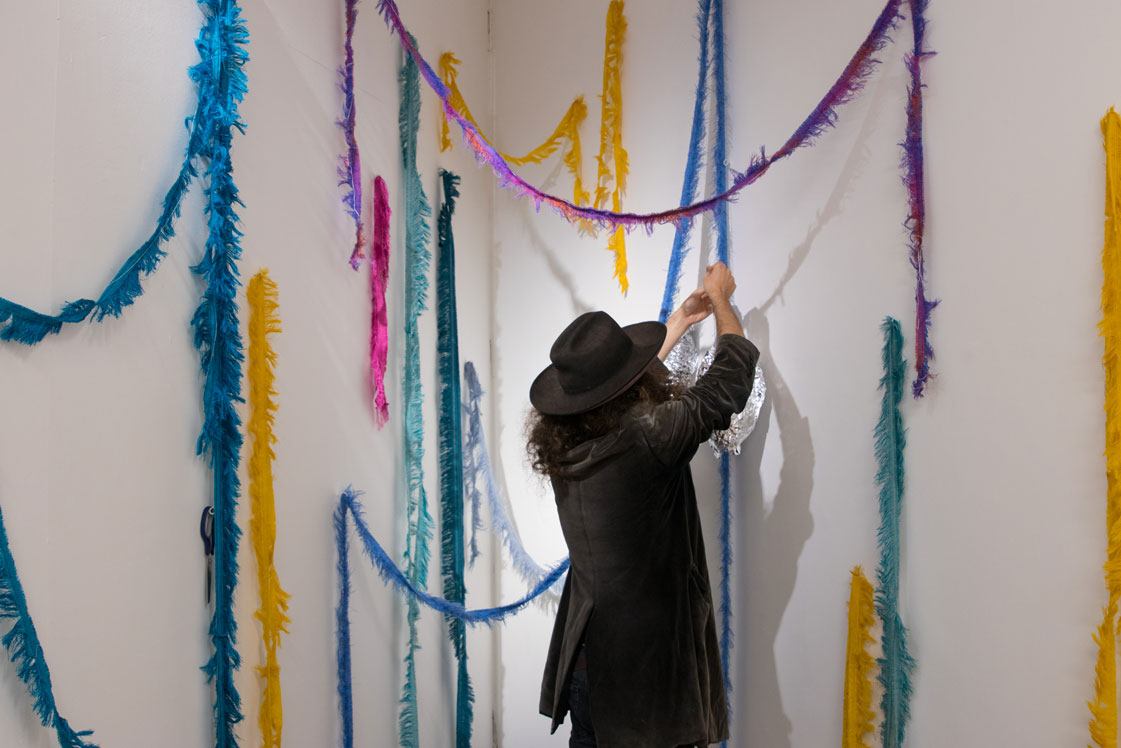
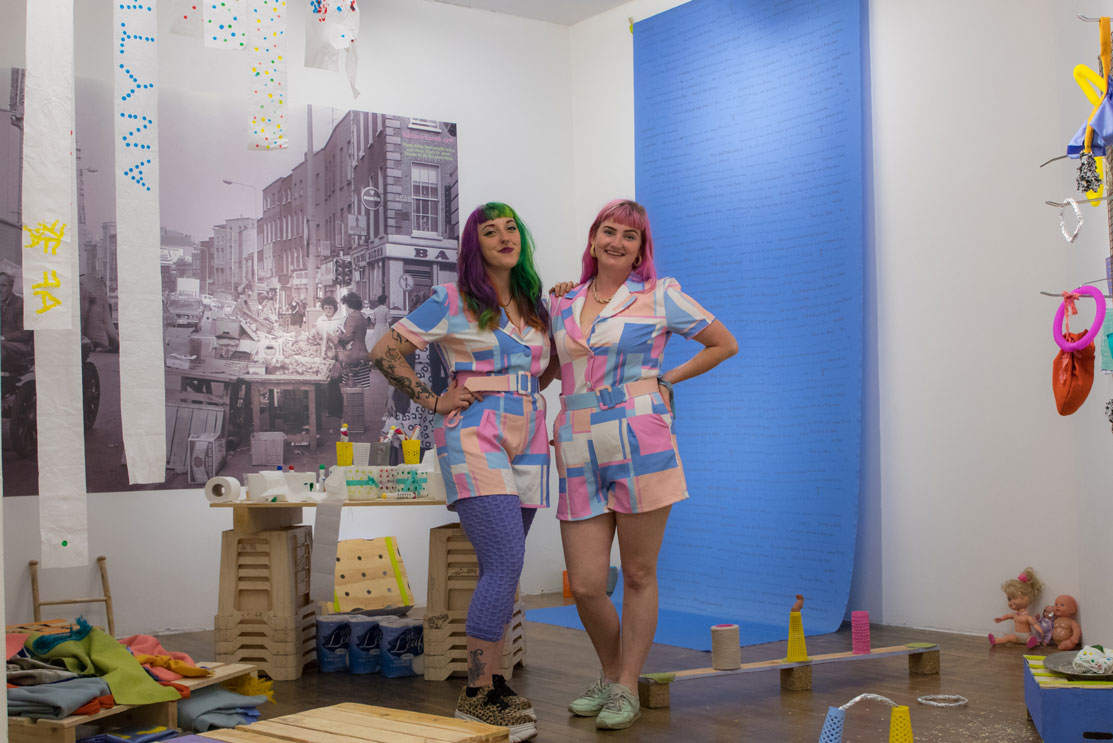
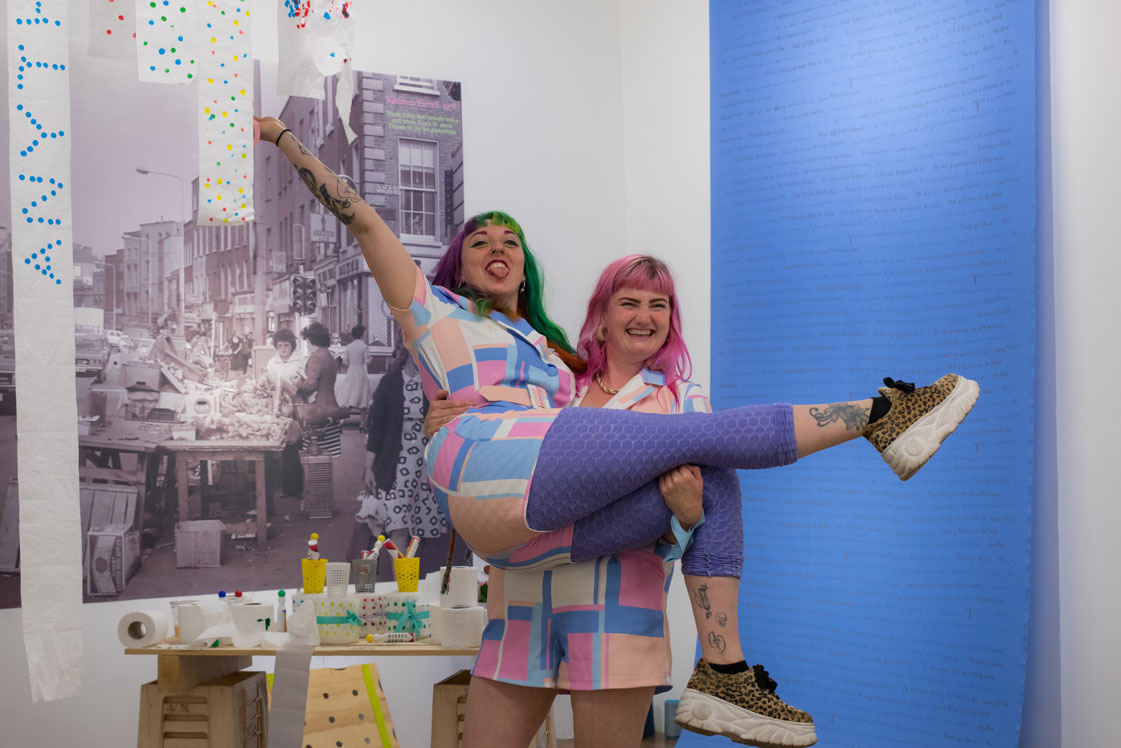



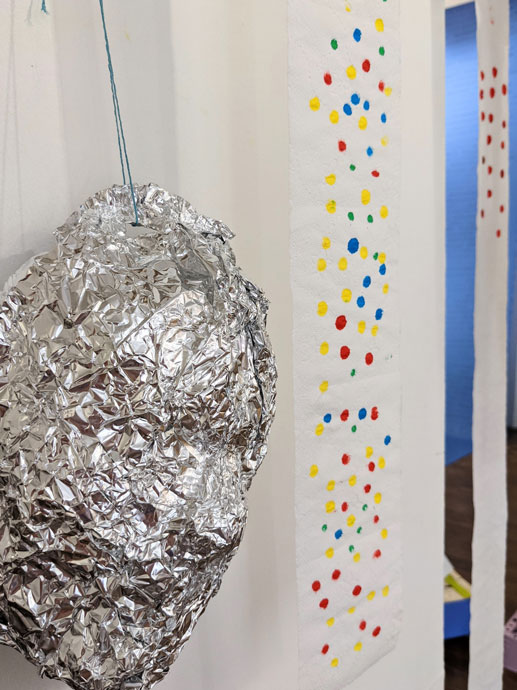
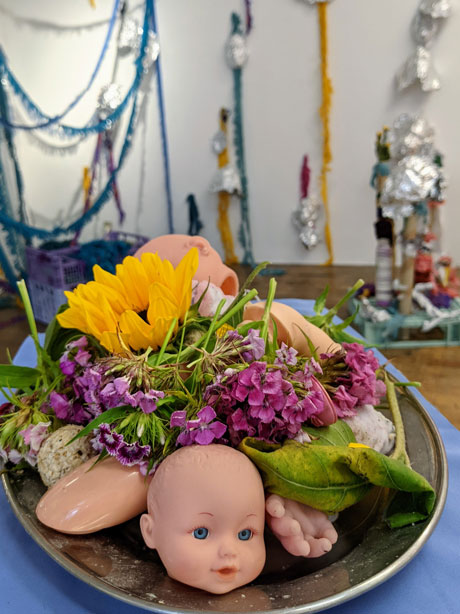
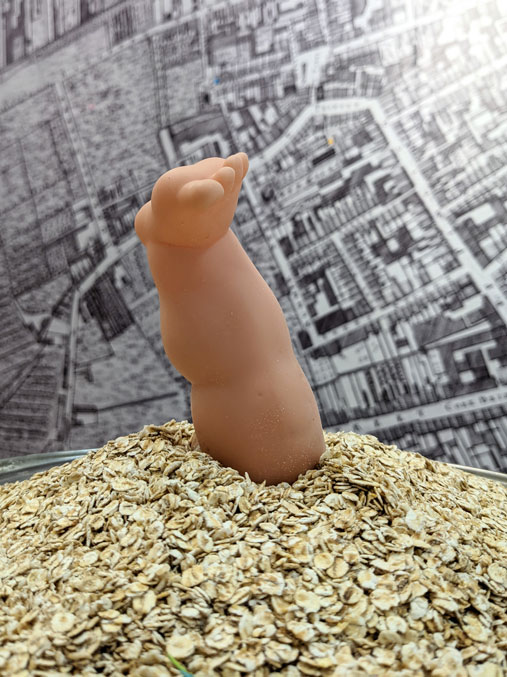
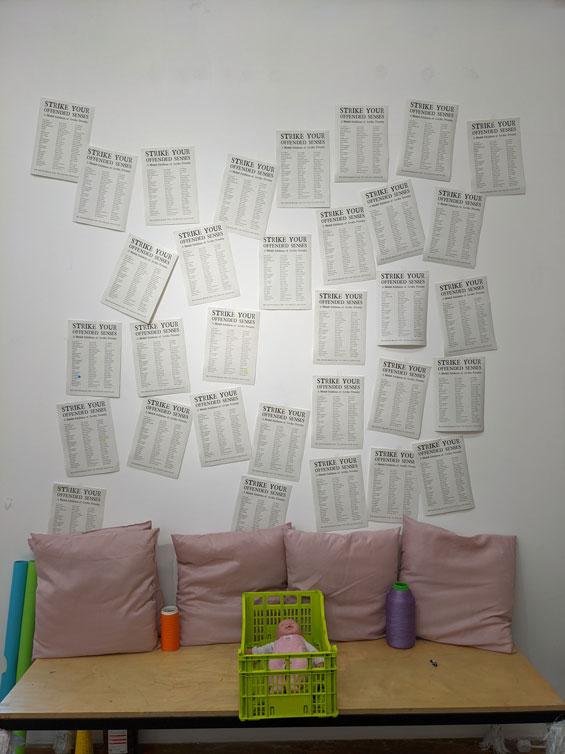
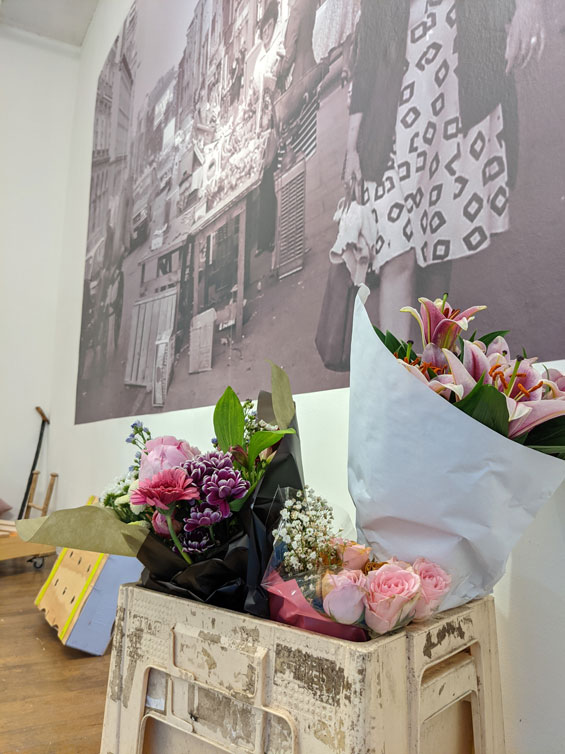
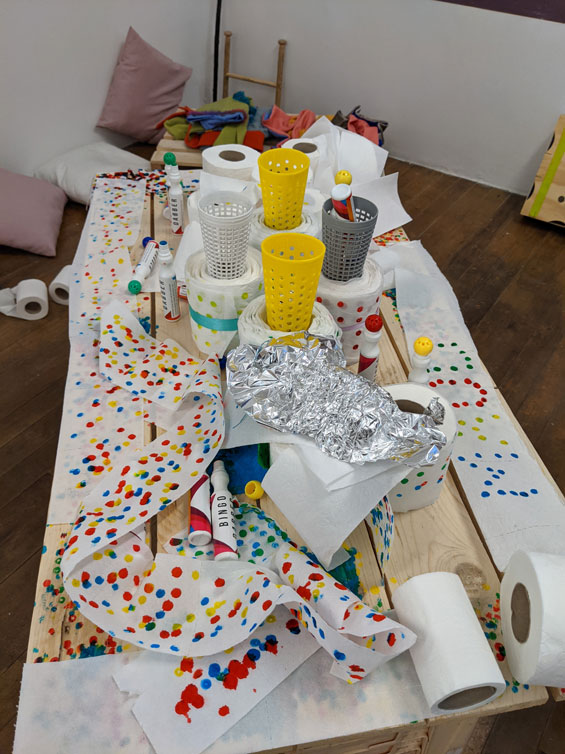
St. Patrick’s Cathedral Sites of Research
History
Jonathan Swift (1667 - 17450) was Anglo-Irish and known for being one of the greatest writers. He was an anglican cleric who became Dean of St Patrick's Cathedral (1715-1745), hence his common sobriquet, "Dean Swift". He wrote political pamphlets to arouse public opinion as Ireland’s economy continued to decline and areas in Dublin such as the Liberties was one of the most impoverished areas in the world at the time. He was also a man who fought hard against social injustice and what he felt were unjust impositions on the Irish people, despite the fact that he would have preferred an appointment in England. He supported the local community by building a hospital and giving out micro grants to the locals.
During his time as Dean his health deteriorated and was often seen to be mad. Ninety years after he died, his body was exhumed and examined by Sir William Wilde, a prominent physician in the city, and also Oscar Wilde’s father. Sir William discovered that Swift had a loose bone in his inner ear, and that this ‘Ménière’s disease’ was at the root of many of Swift’s problems.
A story told by a kind tour guide of the cathedral was that Jonathan had an average of 4 hour long sermons and many people of the congregation would fall asleep. He had wheels put on to his pulpit and ordered his servers to push him around to people who had fallen asleep to shout over them til they awoke.
Swift’s most infamous text was his satirical ‘A Modest Proposal: For preventing the Children of Poor People From being a Burthen to Their Parents or Country, and For making them Beneficial to the Publick’. The essay written and published anonymously suggests that the impoverished Irish might ease their economic troubles by selling their children as food to rich gentlemen and ladies. Swift goes to great lengths to support his argument, including a list of possible preparation styles for the children, and calculations showing the financial benefits of his suggestion.This satirical hyperbole mocked heartless attitudes towards the poor, predominantly Irish Catholic (i.e., "Papists") as well as British policy toward the Irish in general.























La Catedral Studios Loving Locations
Alfa Bargains Bolstering Businesses
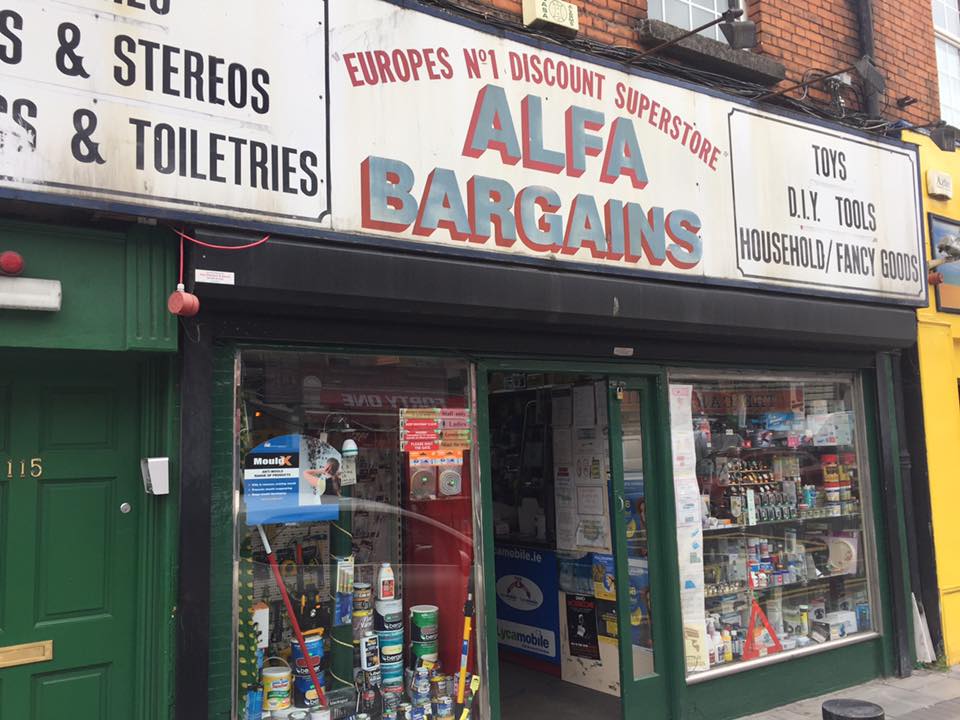
Steiner School Loving Locations
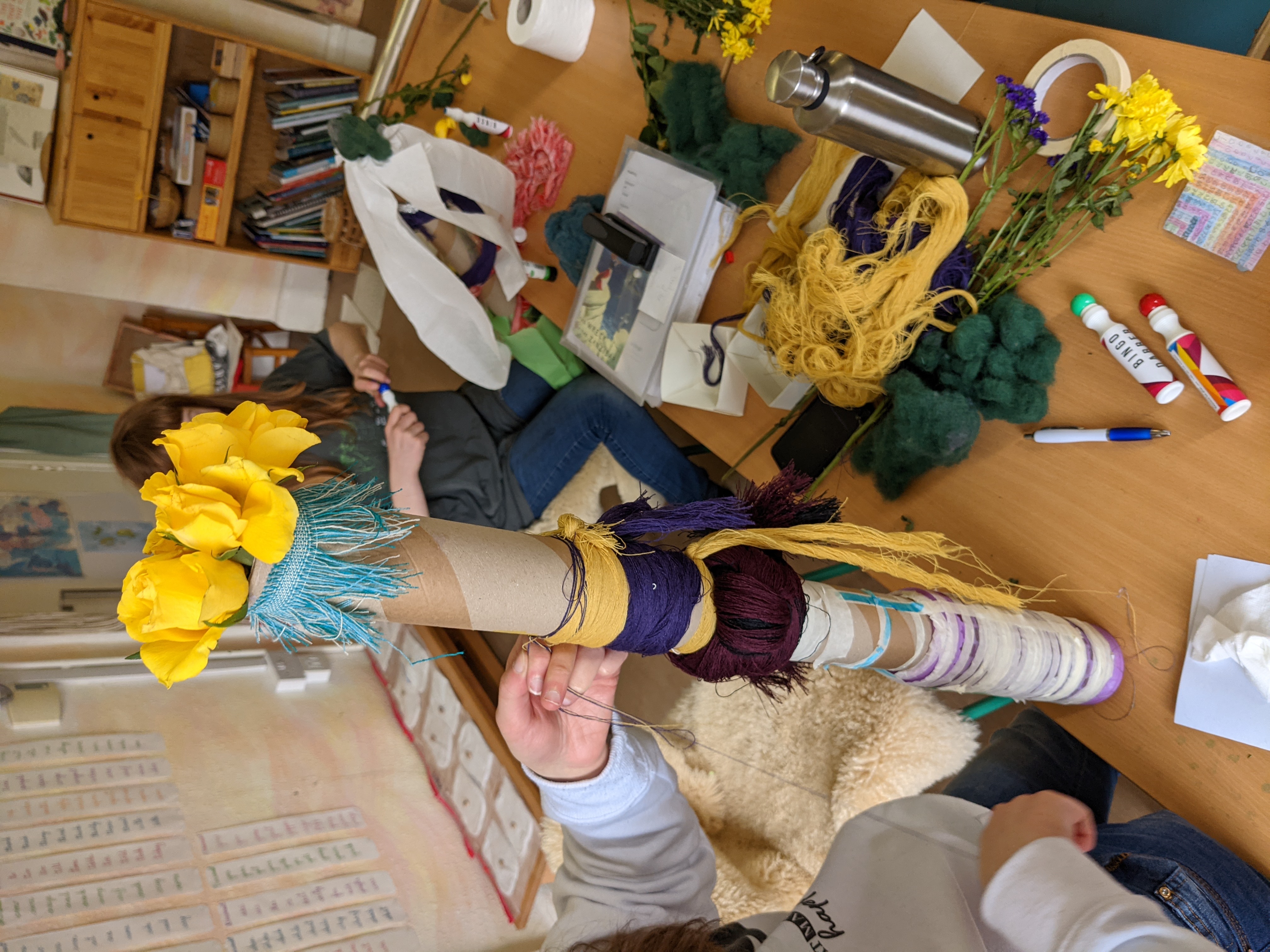
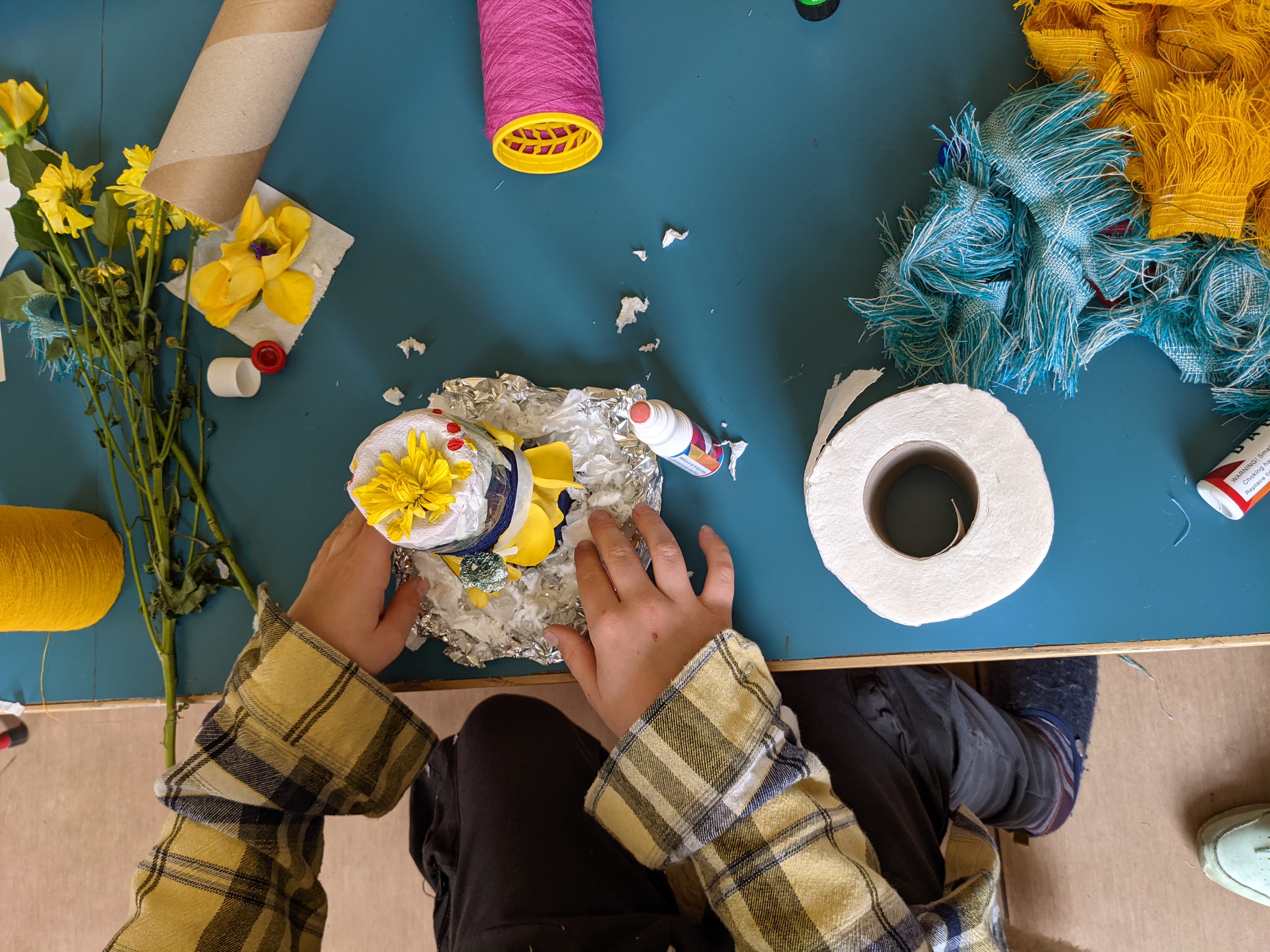

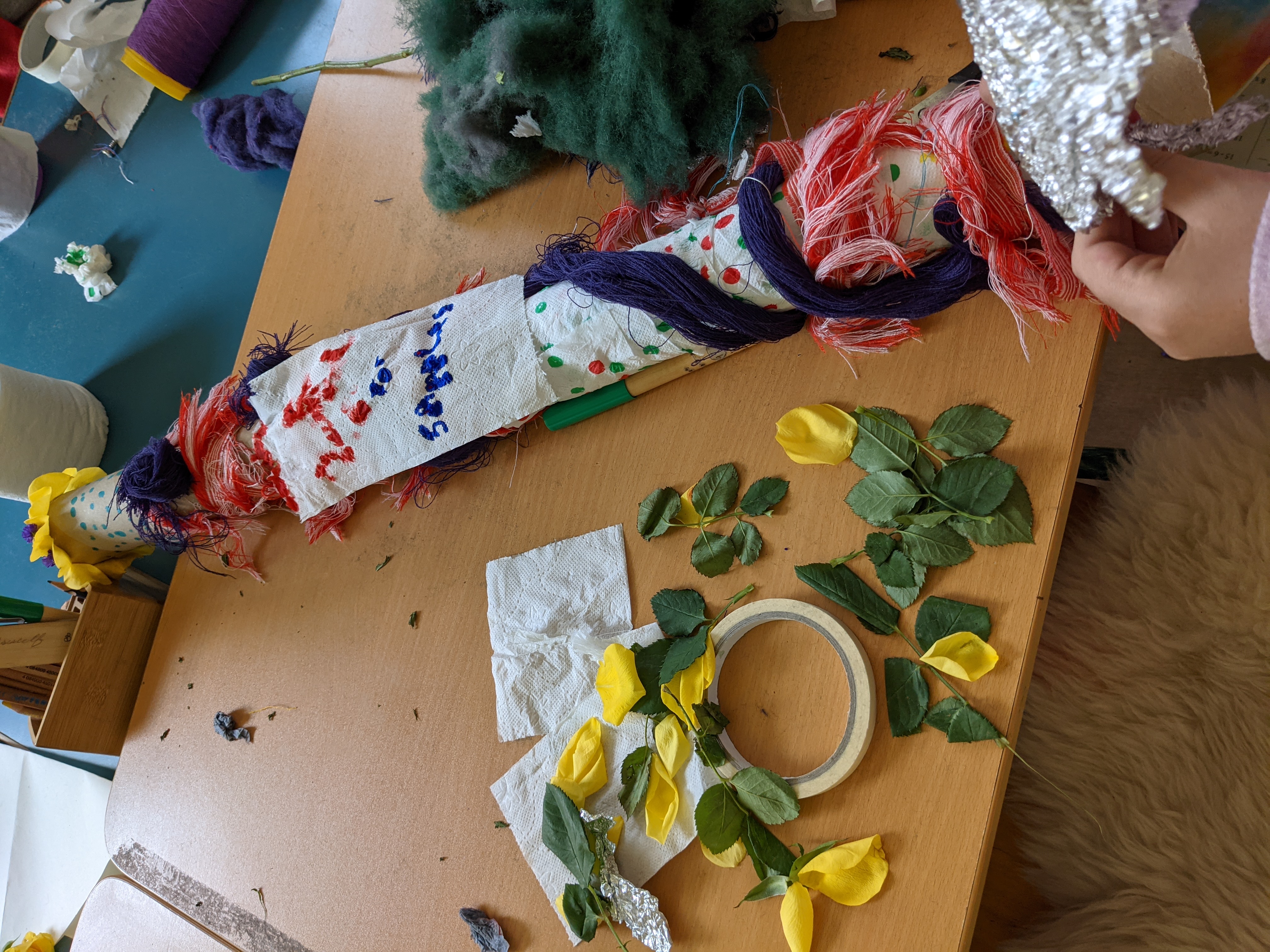
Strike your offended senses:
A modest exhibition of artistic frivolity.
Niamh and Tara come together as an artistic duo to celebrate the strong sense of community within the auld heart of Dublin, the Liberties. Influenced by the affluent social and trade history in the area, they have drawn on contemporary parallels by connecting with local traders, businesses, markets and schools. The pair were motivated by the art of storytelling to collect aural testimonies which echoed through their research.
This research explores the revolutionary pamphlets of the 1700s, with a particular focus on those produced from within The Liberties. Pamphleteering was an important vehicle of protest for advancing political opinions and proposing remedies for social and economic issues. Recurring subjects of these pamphlets were the decline of the weaving and wool industry, economic outflow, parliamentary exploitation, rent inflation and poverty. Often published anonymously, they are comparable to contemporary social media/blogging platforms and current global political vocalisation.
The pair devised artistic interventions with materials sourced, and lovingly donated, from within the Liberties. One of the noteworthy colourful materials in these interventions are selvedges and fabrics from Botany Weaving Mill est 1934, a world leader in the manufacturing of aviation and commercial furnishing fabrics, humbly located amongst a housing estate on Cork St. Their woven wool fabrics reach international spheres preserving a connection to an archaic industry once thriving in the area of global trade.
The results of these experimentations are placed within the gallery space to invite audience participation. Performances and making sessions will be hosted over the run of the exhibition, through which the artists will explore shared ownership of art and reveal a history that is both collective and cyclical.
The artists encourage people to feel comfortable and to physically engage with the artworks/ materials on display. The exhibition will be the result of the artists and the community playing together. Continuously adding to this ever-changing, ever-growing, bustling exhibition.
Niamh Hannaford and Tara Carroll are two colourful friends who have come together to produce art that is vibrant, energetic and celebratory. Individually, and together, they have interdisciplinary practices which encompass performance, print, sculpture, installation, textiles and painting. Their work complements each other, as there are a number of parallels within both their mediums and concepts. Ideas discussed in their work include femininity, community, Irish history and the self.
Tara Carroll is a visual artist based in Dublin. Her art practice is predominantly performance, which transcends into other mediums such as textiles, installation, video and photography. Her artwork explores the fetish as a metaphorically enigmatic intersection of religion, mythology and sexuality. Tara has exhibited and performed extensively throughout Ireland in galleries such as BCA Gallery, The Complex, Mart, 126 Galway, An Táin and RHA. She received the Emerging Irish Artist Residency Award from the Burren College of Art in 2019. She was also recently awarded a bursary from Kildare County Council to produce her new project 'Art as Pilgrimage'.
Niamh Hannaford is a visual artist based in Dublin. Her practice is rooted in self-reflection, which she visualizes through a combination of self portraiture, spoken word and object making. By documenting and publishing herself, she has found others keen to share similar stories of doubt, fear, and joy. It is this sharing of experience, and thus, promotion of mental wellbeing that deeply interests her. She has exhibited and performed both nationally and internationally, including the 191th RHA Annual Exhibition, The Art Market Budapest and the Fringe Festival. Niamh recently received funding from the Arts Council Professional Development Award.
Share
More
AIP/Pages / Pallas Projects / Niamh Hannahford / Tara Carroll





